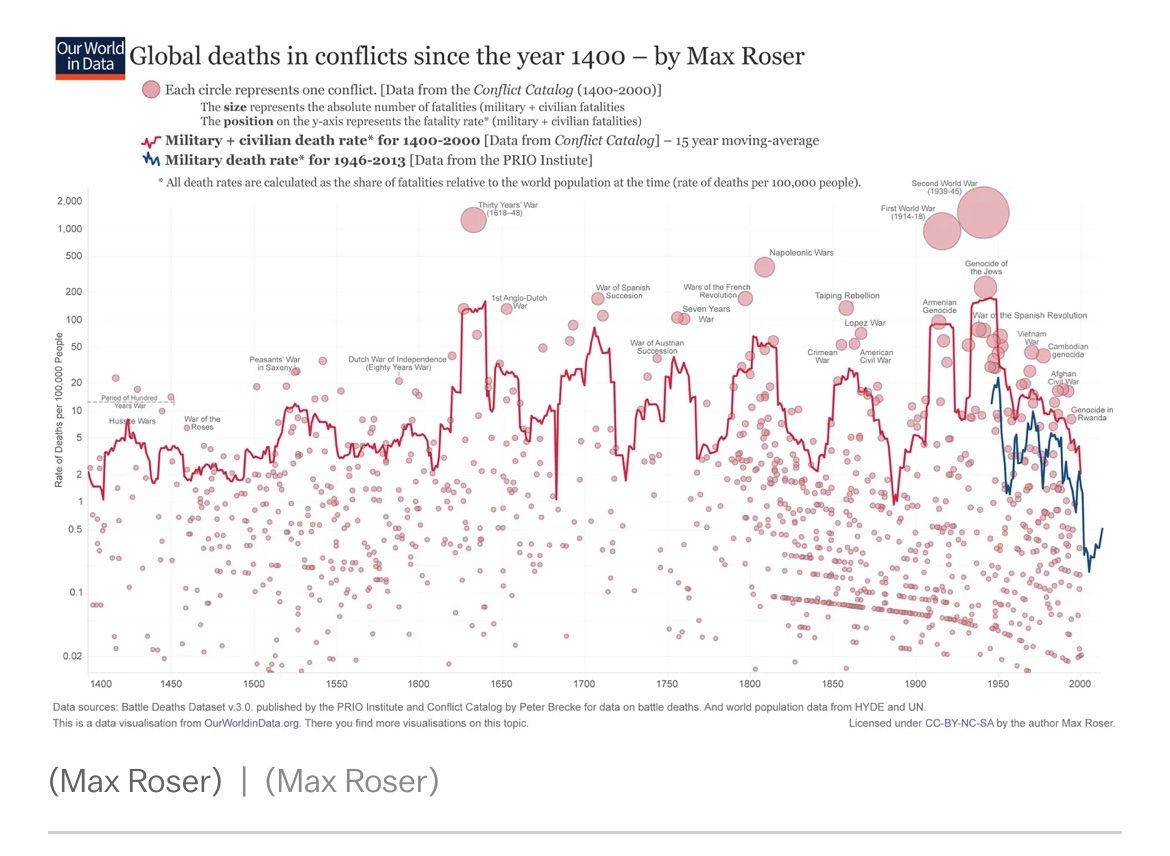We don’t just uncover all the teased stocks from those hyped-up newsletter ads we all see each day… we also keep track of those teased stocks, look for trends, and monitor performance, and the biggest story and the biggest driver of stock prices over the past year has been our newfound fascination with artificial intelligence. As of now, most of the top-performing teaser picks over the past year are stocks that have some sort of AI connection, while past-favored sectors like biotech or oil or mining or alternative energy are filling out most of the bottom of our tracking spreadsheets. You can always check on our Teaser Tracking page to see which of the teased stocks are doing best and worst at any moment, but I thought I’d run down the list of AI-specific teasers for you… we last did this back in October, and the list has since doubled in size.
Today we’re just about a year into the “AI Mania” phase of this market, which arguably started when the first public version of ChatGPT was released by OpenAI and really sparked it all in late 2022, but really caught fire when NVIDIA got people excited with with their February 2023 quarterly update and then blew up the market with their shocking results in May of 2023.
This is a quick rundown of which AI stocks have been teased and pitched by the various newsletters over the past year, to try to answer some of the ongoing questions from folks… a few of these stocks are brand new, many are very familiar, and some of them certainly wouldn’t qualify as “AI stocks” if I were the judge, but now we can at least see them all in one place… and if you’ve been wondering about an AI teaser pitch you’ve seen, hopefully it’s one I covered below. I first put this list together back in October, and all of those stocks are still listed here, but we’ve also now updated it with every AI-related tease since then.
I’ll go through them in alphabetical order, and will try to list all the newsletters who teased the stock, with links to those original articles… and anything else I happen to know about them. I snuck in one or two picks that were teased late in 2022, after ChatGPT was launched, but almost all of these have been actively teased and promoted by newsletters over the past year — some almost incessantly for all of that time, and a few just recently.
I’ll include a one-year chart for each, just to put the stock in some context (that is NOT the chart “since it was picked” for any of these, just the full-year chart — many of these names were picked by different folks at different times).
If you’ve got other AI “story stocks” that you know are recommended by various newsletters or pundits, feel free to add those in the comments below so we can keep track of ’em all in one place — and it’s very likely, of course, that some stocks that we didn’t see specifically teased by a big newsletter this year will also be significant AI players as the sector matures.
And yes, I also own a bunch of these stocks personally, full disclosures at the bottom in case I forget to mention that in a specific summary.
Thanks to the vagaries of the alphabet, we start with one of the stranger pitches…
1-800-Flowers.com (FLWS) was teased by Motley Fool Canada in ads for their Market Pass service in mid-December (that ad also teased Docebo (DCBO) and Mitek (MITK), more on those further down), and it seems it was pitched largely because FLWS was a technology leader in past cycles (an early e-commerce adopter, for example, selling on AOL before most people even had internet service), and the founder has come back to run the company. Here’s what I said about that recommendation at the time:
They’ve innovated and grown, with new brands and acquisitions over the years… but FLWS has never generated a ton of free cash flow or earnings, and when revenue growth collapsed in 2022 after the 2020-2021 e-commerce boom the outlook got a lot murkier, though perhaps the return of the founder to the CEO role this past summer will help ignite earnings growth again, we’ll see — that pick seems pretty contrarian to me given their history, but the revenue is so high, and the price/sales valuation is about as low as it has ever been, so perhaps there’s some potential profit magic hiding in their future.
ABB (ABB.ST, ABBNY) was teased by Eric Wade for his autonomous driving ads for Stansberry Innovations Report just last month — self-driving cars were long the primary focus of “AI” talk, though that’s no longer true, so that’s the sort-of connection, though ABB is an industrial automation and electrical infrastructure play on a much broader scale and has only limited exposure to the automotive market (and has more to do with electrical motors and EV charging than with AI specifically).
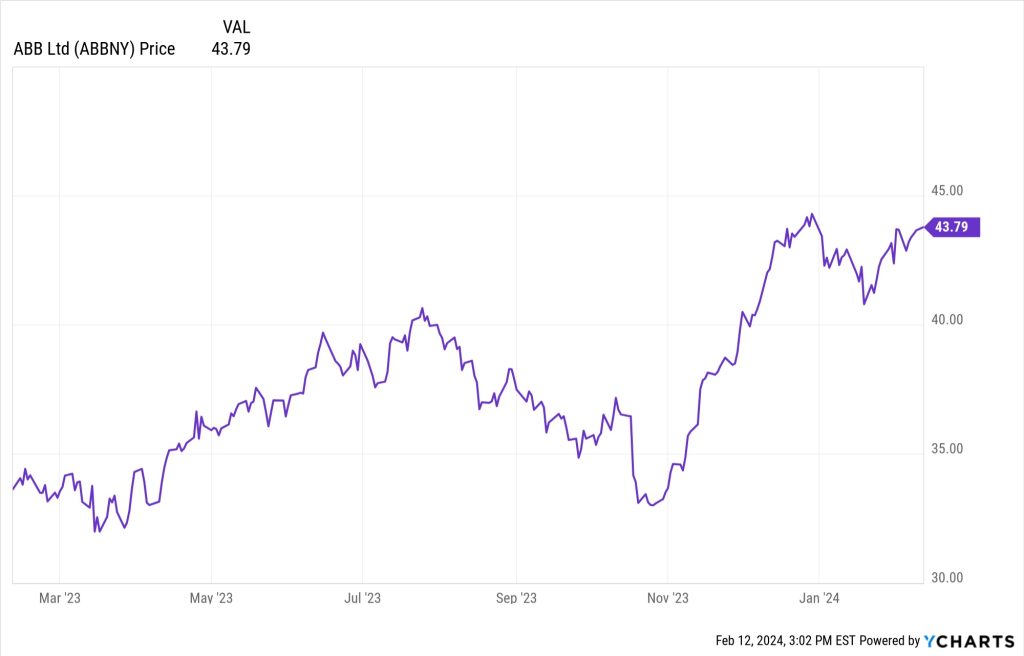
Absci (ABSI) was teased by Alexander Green at Oxford Microcap Trader as his “#1 Stock for 2023” and, more recently, as his “#1 Investment for 2024” as a “artificial intelligence stock that trades for just $3” largely on the strength of ABSI’s AI-powered drug development platform and their drug development deal with Merck (MRK) (and their “secret partnership” with NVIDIA). (Green also teases Exscientia (EXAI) as an “AI drug discovery” stock that he thinks “will become the most important AI company in the world” in more recent ads for his entry-level Communique newsletter, though the ABSI ads continue to circulate as well.)
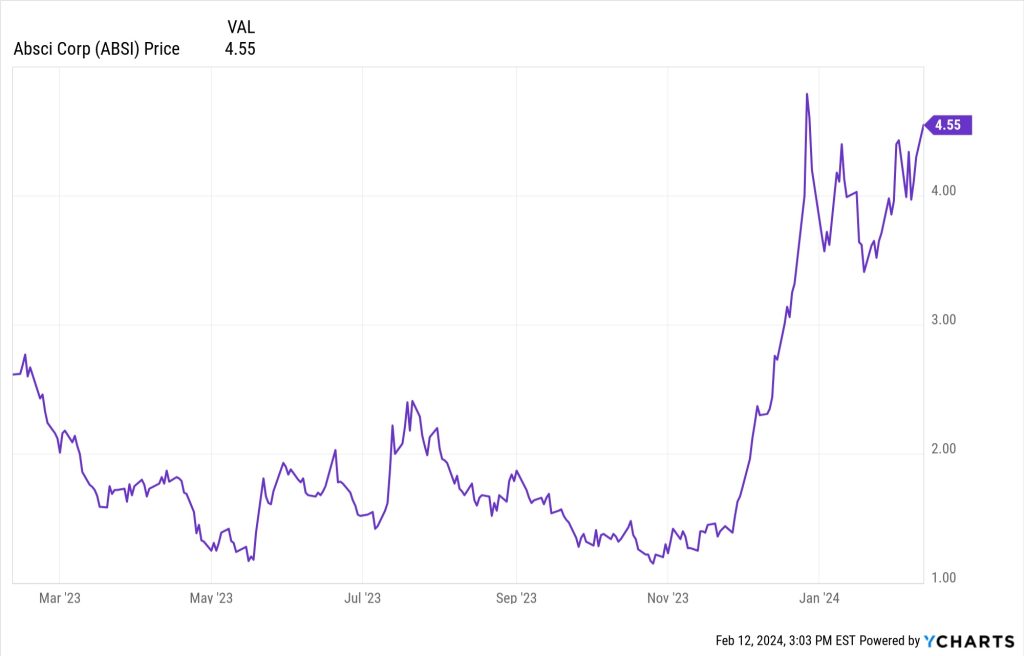
Advanced Micro Devices (AMD) is often talked up as a “next NVIDIA” play, since they are the second-place designer of GPUs and are trying to catch up with NVIDIA in data center GPU chips for AI processing — the most specific pitch of AMD we saw last year was from Colin Tedards, who took over Near Future Report when Jeff Brown left Brownstone Research and teased it as the Next NVIDIA that would “unlock the next wave of AI profits” in October.
AMD was teased by Ian King in ads for his Strategic Fortunes in December of 2023, this was his “A.I. Energy” play because of AMD’s work at helping to build the supercomputers which are being used to control the first experimental nuclear fusion reactors. They do indeed partner with Lawrence Livermore on that R&D Project, and AMD is an impressive company, but nuclear fusion will not be moving the needle for them anytime soon — their story will be written by how well their Radeon and M100 chips compete with NVIDIA as AMD’s “AI” chips really begin to sell in volume this year, and, to a lesser extent, by how well their Ryzen CPU chips compete with Intel. Rollout has been a little slow as of the last AMD report, which disappointed investors, but the next couple quarters will presumably be dominated by discussion of their sales of AI GPUs for data centers.
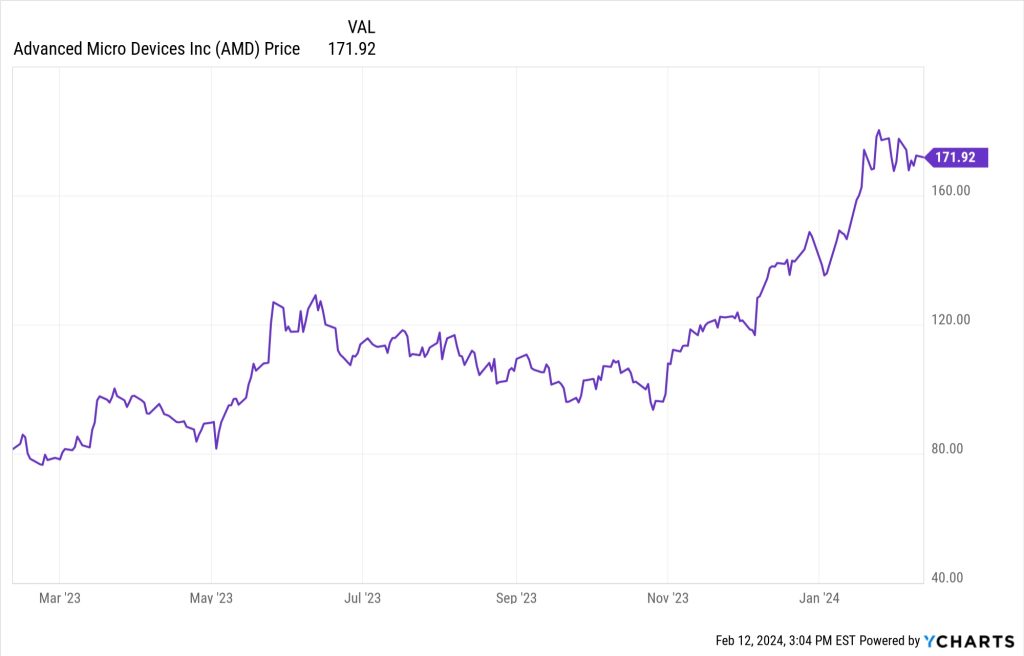
Alphabet (GOOGL, GOOG) has been one of the primary A.I. stocks for a decade, working mostly behind the scenes (including with their acquisition of DeepMind about a decade ago), and it was often talked about early on as a victim, since folks were initially enthusiastic about Microsoft’s ChatGPT-fueled Bing search as a competitor, though after that initial overreaction it bounced back strongly and is now seen as a pretty core part of the AI story, along with fellow mega-cap tech companies Microsoft, Meta, Amazon and, more directly, NVIDIA. Whitney Tilson pitched this as one of his AI picks in April at about $106, though, like most of the big tech stocks, it’s an investment he has pretty consistently touted for several years… Tilson doesn’t have his own newsletter any more, Empire Financial was effectively shut down by Stansberry/Marketwise after Porter Stansberry came back to lead the company he founded, and Tilson is now the lead editor of Stansberry’s Investment Advisory. The Motley Fool has also long pitched GOOG for their “AI Disruption Playbook,” going back to at least 2018 or so, and there was a big push for that tease starting again last Fall (covered here, GOOG is their “Sleeping Giant”), and many other folks have recommended the stock for years — most recent was Stansberry Innovations Report, for which GOOG was the “freebie” stock giveaway in presentations because of the strength of the Waymo self-driving car business.
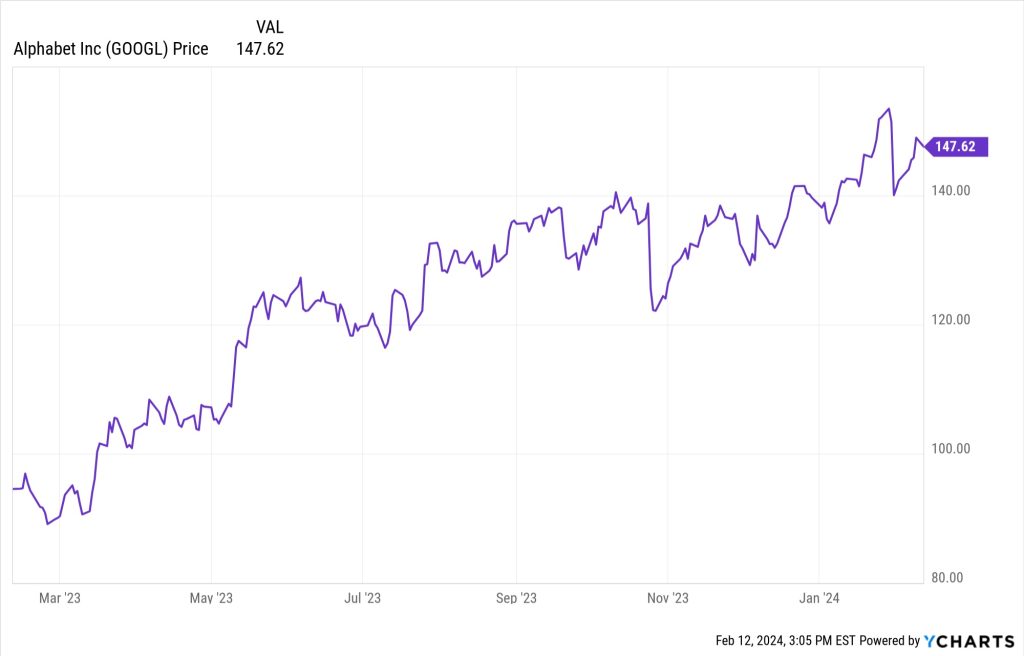
Amazon (AMZN) is, no surprise, one of the core AI stocks that pretty much everyone talks about — they use AI on Amazon.com for various things, including pricing and advertising and their recommendation engine, and AI services are also a key offering for other companies through Amazon Web Services (AWS). Whitney Tilson also teased this as one of his AI picks in April, and, like Alphabet and Meta, he has recommended it many times over the years — he touted it in January, too, at around $99, though not really as an “AI-specific” play, but it got the full AI treatment in mid-April at around $107. I’ve also been gradually buying Amazon for about six years, though I can’t claim that “AI” was a big part of my reasoning. The Foolies were on board with this one, too — they added Amazon to the most recent iteration of their A.I. Disruption Playbook (they call it their “Whispers from the E-Commerce Shadows” play), and of course David Gardner at the Fool is quite well-known for picking Amazon back before the dot-com peak in the late ’90s and holding on for 25+ years, giving him a cost basis in AMZN of I think about 15 cents per share at this point.
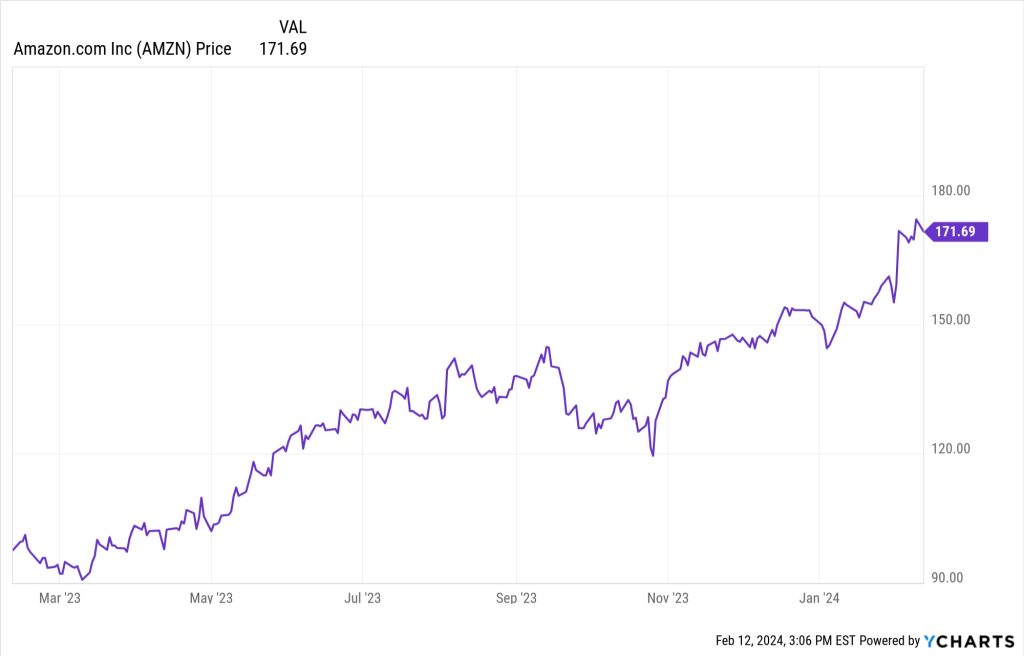
“reveal” emails? If not,
just click here…
Ambarella (AMBA) was pitched as a “next wave” A.I. stock because of their video chips that help with processing of images — the pitchman was Shah Gilani this year, touting it as the next great chip story in the US in ads for his L.A.U.N.C.H. Investor, though the stock has been teased before as a play on drones, or on self-driving cars, and the company now calls itself an “edge AI semiconductor company.”
My thoughts at the time?
“The last time they reported a real profit was back in 2018, and rising expenses and slack demand for electronic devices this year have made things even worse recently. They certainly could bounce back, as more “internet of things” devices are installed to collect more data and as more autonomous devices rely on image-capture chips to understand the world around them, but the windfalls that Ambarella investors seem to have expected for a decade now haven’t come yet. Whether that’s because of competition from more commoditized imaging chips that are “good enough,” or because there are more advanced providers out there that I don’t know about, they’ve never been able to put together real revenue growth and margin improvement that would tell investors that the story about the quality of and demand for their chips and designs is real enough to turn into actual money. I really don’t know why, but, since we’re talking about the semiconductor business, I suspect it’s competition and pricing pressure from their customers that’s keeping them down.”
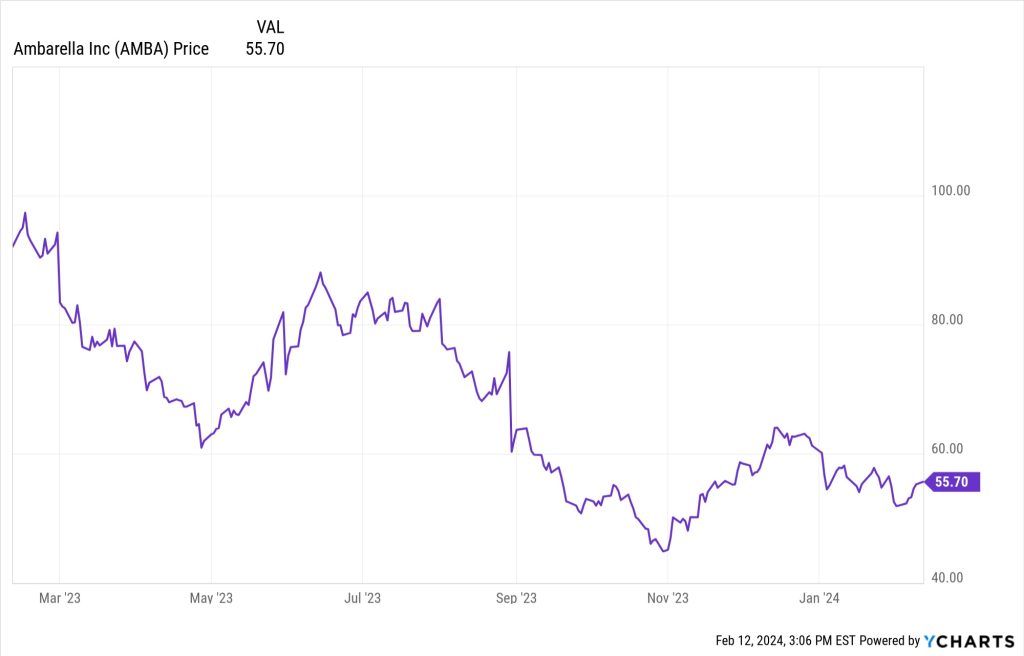
Appian (APPN) was, I guessed at the time, a pick by Luke Lango in his AI “SUPRMAN” promo. The interesting part of Appian, which is one of the unprofitable crop of SaaS stocks from the COVID boom that everyone briefly loved, and drove up to wild valuations of well over 20X sales, is the stickiness of their subscribers. They’re integrating AI into their business on the “low code software” side, but they have also been talking about their opportunities in private AI, AI systems that might be trained on public data but are also accessing a company’s private data and being used only internally. I said at the time that “they’ve been a little bit left-for-dead after being a big winner of the SaaS mania of 2020, they provide a low-code platform for customizing enterprise software, and they’ve continued to grow pretty nicely… and they are integrating AI into the business, though it’s not a key part of their quarterly earnings press releases yet.”
Earnings have not particularly impressed in recent quarters for APPN, and there’s been a good chunk of insider selling, which investors never love to see, though they did launch an “AI Copilot” for developers. They’re still probably at least 3 years from becoming profitable.
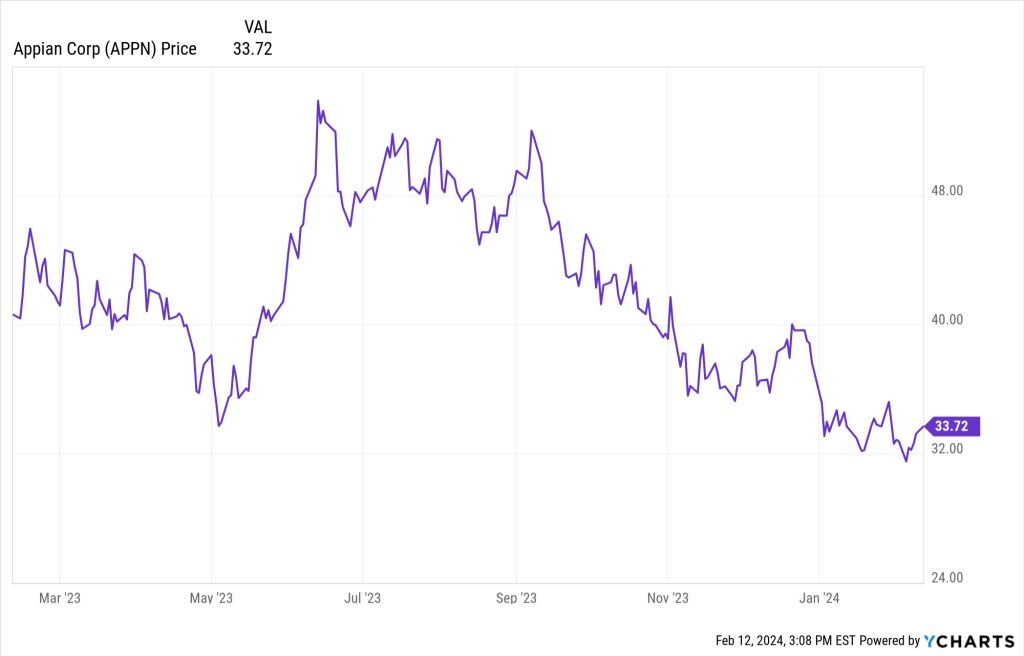
ARM Holdings (ARM) is the most recent IPO to be aggressively teased as an A.I. play, in ads for the Disruptoers & Dominators newsletter by Jon Markman at Weiss Research. I noted at the time that it’s “perhaps a less-direct play on AI chips, since they own the IP on the basic architecture of a lot of semiconductors being used today for everything from mobile phones to servers, and profit from growth in demand for new chip designs… but they’re also much more richly valued, at more than 70X earnings” — and since then the stock has roughly doubled in a month on A.I. enthusiasm following its blowout earnings report (so now it’s at 120X forecasted adjusted 2024 earnings).
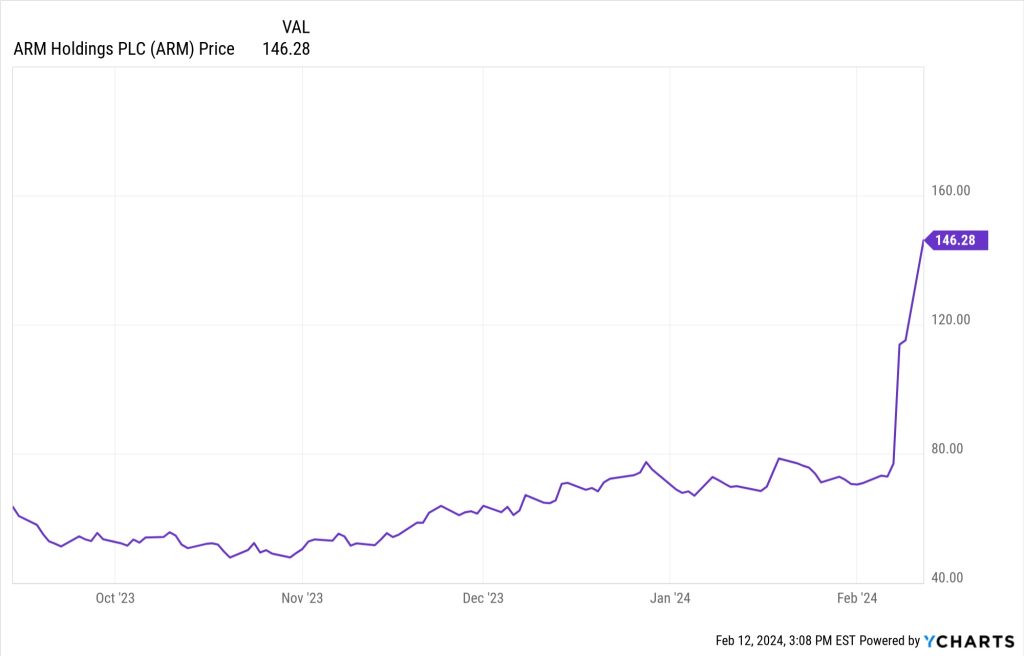
ASML (ASML) is the monopoly supplier of key lithography equipment for manufacturers of high-end semiconductors, which means that as smaller and more complex chips are made for AI there may be more need for more of ASML’s giant machines. They were teased for that reason by James Altucher back in October, he called them the “supplier’s supplier” because they provide equipment that is needed by Taiwan Semiconductor, which he called the “A.I. Crown Jewel.” They’ve also been teased off and on by the Motley Fool as the “most important company in the world,” though that recurring ad doesn’t specifically focus on A.I. as the reason to buy ASML.

BigBear.ai (BBAI) was touted by Nomi Prins at Rogue Strategic Trader — actually, she really recommended the warrants on BigBear.ai (BBAI.WT), which mostly strikes me as dumb, given how low the price of the stock already was (the warrants didn’t provide all that much leverage, given the extremely high likelihood that they’ll expire worthless). That was one of the first AI picks that the first wave of next-big-thing speculators jumped on back in January — mostly, I suspect, just because it had the “.ai” in its name. BigBear was around $1.75 when we covered that Prins tease on August 30, and the warrants were around 25 cents… though her attention immediately spiked those warrants to 60 cents (they’re back down around 35-40 cents now, still awfully high for $11.50 warrants on what is now a $1.40 stock.
Here’s part of what I said when I covered this one:
“I’m not so impressed by the company — they’re growing their revenue slowly, and they’re running short on cash, but it’s possible it will work out if they can win some meaningfully larger contracts (though they’d probably have to spend heavily to fulfill those contracts, too)… I certainly wouldn’t take the much larger risk of speculating on BigBear using warrants even at 26 cents, and that goes doubly true at 50 cents, that would mean you’re increasing the odds of a 100% loss dramatically, on a stock that is already a risky bet (if BBAI goes up less than 500% in the next three years, the warrants would expire worthless… and given the current fundamentals, a return of less than 500% for the stock seems awfully likely to me).”
Shah Gilani pitched BigBear.ai (BBAI) shares in August, too, as part of his “Three AI Breakthrough” stocks ad for L.A.U.N.C.H. Investor, picking smaller companies that he thought would crush NVIDIA, Microsoft and Alphabet. That was at a somewhat lower price, around $1.30, after the AI mania had started to burn off a bit.
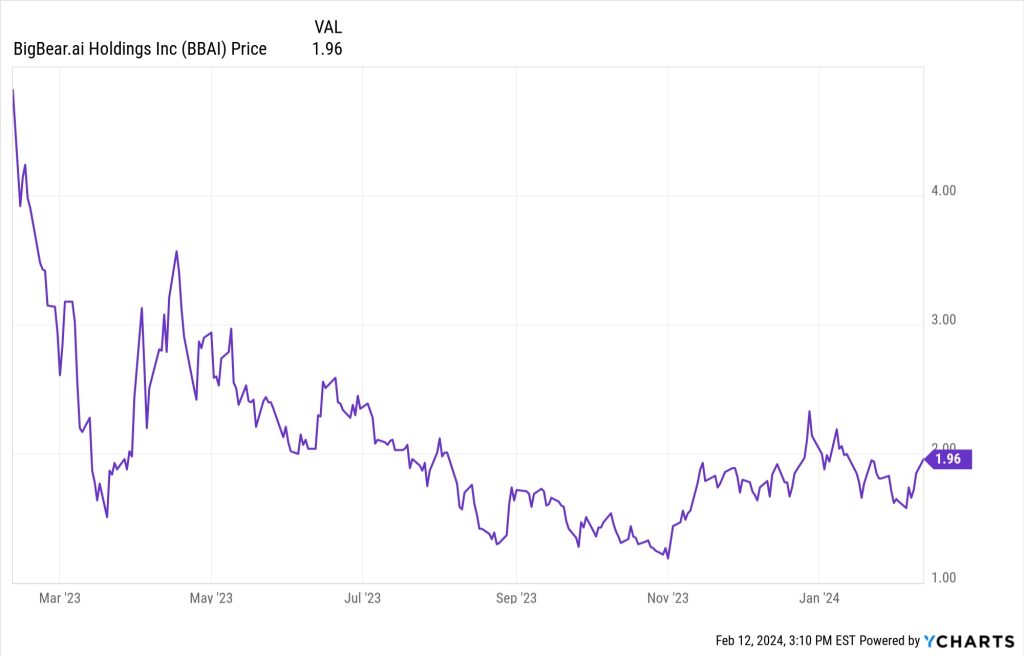
BrainChip (BRN.AX, BRCHF) is a tiny Australian chip designer, it’s been teased since August as the “Next NVIDIA” by Tim Bohen at StocksToTrade, he also calls it his “Inception” stock. The basic idea is that this company will be the savior of autonomous driving, using their partnership with Mercedes and other high-profile companies to get their Akida AI chips into vehicles (and other Edge applications) to improve real-world processing, instead of having to have all that processing done in centralized data centers. Still largely pre-commercial and seems like a venture capital-type speculation, though it has been publicly traded (and burning cash) for many years.
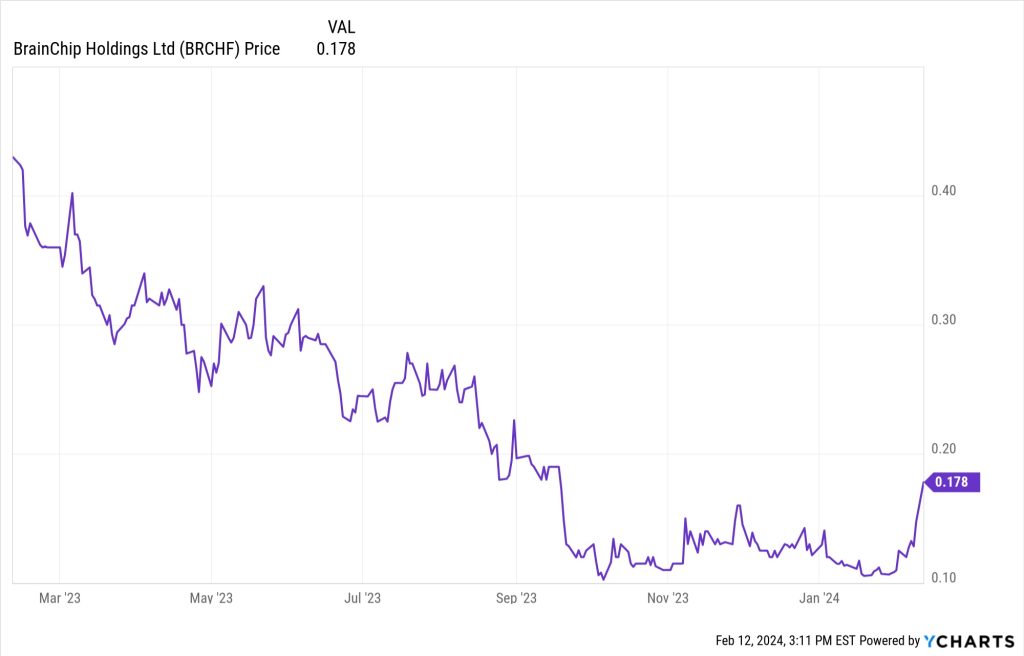
Braze (BRZE) was pitched by Cabot as their #1 AI stock back in August at around $42. No big news since, this is what I said about it at the time:
“This is a pitch for an AI provider that’s relied upon by lots of large corporations, and the Thinkolator’s best match (not 100% certain this time) is Braze, which is provides a software platform for cross-channel customer engagement/marketing, including some marketing strategies that use machine learning to target customers and improve results. It may be a stretch to call it a big AI story, but I guess that’s a possible evolution of what they’re offering. They are similarly valued to a lot of smallish SaaS companies (unprofitable, 20%+ revenue growth, trading at ~10X sales) — they have good metrics, with most of their revenue being from subscriptions and with 30%+ revenue growth recently, and 122% dollar-based net retention (which means their customers are sticking around and spending more each year), but they’re not quite yet at profitability — they might be profitable on an adjusted basis next year. They did have the advantage of going public near the market peak in late 2021, so they have a solid cash balance that can support their continued growth. Seems like a reasonable small-cap SaaS story, I don’t know if there’s going to be a big AI boost or if they’re going to be able to push through to profitability and begin generating earnings growth in the next few years, but that’s the trajectory that analysts see right now.”

BWX Technologies (BWXT) has been teased by Porter Stansberry since May of 2023, though the initial ads just focused on a tangential connection to Elon Musk and the owner of the “secret energy grid” that will save us all, thanks to their role in building small nuclear reactors… but in January, presumably to ride the AI enthusiasm, Porter started pitching BWXT as the “A.I. Keystone” in January of this year because, he says, the only way to meet the huge power needs of the artificial intelligence revolution will be through massively building up a network of small modular reactors, with BWXT a likely beneficiary (the most talked-up name in the SMR space previously had been NuScale (SMR), which was briefly a darling of the SPAC mania a couple years ago, and does have an approved reactor design in the US, but which has been clobbered because its first project was canceled — SMR was never teased as an “AI” stock, but Whitney Tilson did recently pitch it as a “E-92” stock for the nuclear power renaissance).
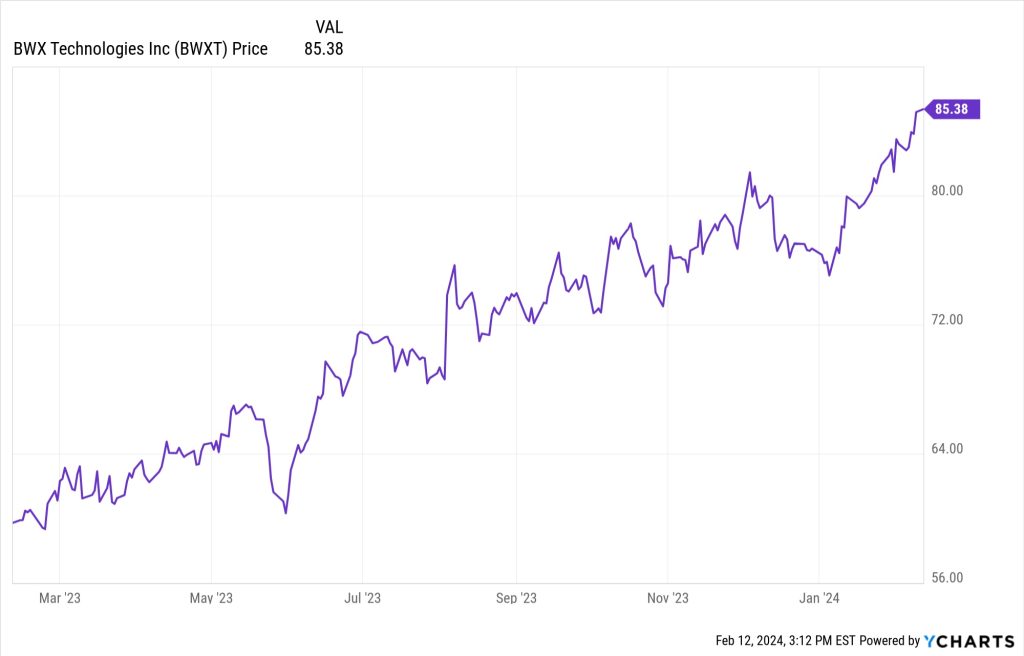
Cadence Design Systems (CDNS) was teased as one of three “AI Blueprint” stocks by Louis Navellier in December (its only real peer in providing the software used by semiconductor developers is Synopsys, which has also been teased as an AI play as demand for AI chips grows the semi market generally).

Carrier Global (CARR) is, of course, not really an AI stock in any direct way… but Karim Rahemtulla teased it as an AI play in ads for his Trade of the Day service because of the huge demands that AI is placing on data centers, which means that data centers have to turn to liquid cooling to handle the excess heat from all those NVIDIA (and other) chips banging away at processing AI work. He pitched several “liquid cooling” stocks, but Carrier Global was the most prominent and is one of the largest HVAC equipment companies in the world, with a strong and sustainable service and replacement business as well as some exposure to data centers (though that’s still a relatively small part of their business, smaller than the commercial or residential building markets). Rahemtulla also teased Daikin Industries, another cooling giant, in the same ad, and probably (clues were not certain) pitched DuPont (DD) and Air Liquide (AI.PA, AIQUY, AIQUF) for their exposure to liquid cooling for data centers as well — neither is even as close as CARR to being a “pure play” data center company, but there is at least a little exposure to that business.
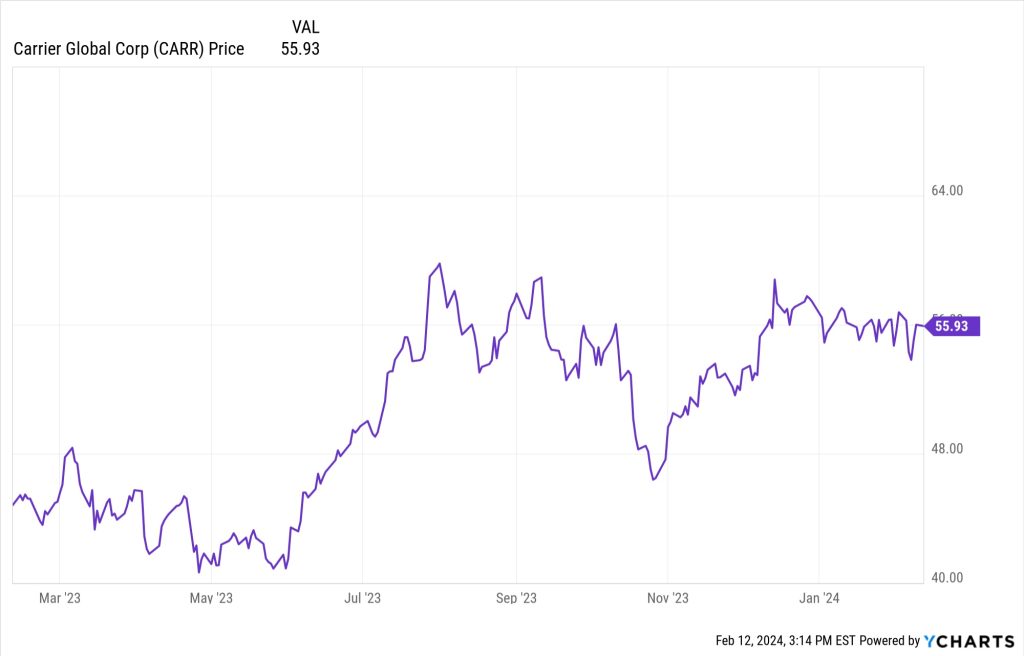
C3.ai (AI) was one of the initial stocks to react strongly to ChatGPT and the immediate fascination with generative AI late in the Winter — partly because it’s got the best ticker symbol of all, I imagine (all of the stocks that add “.ai” to their name caught at least a little attention, including BigBear.ai). The big push for C3.ai in teaser world came forst from Enrique Abeyta at Empire Financial, he teased it heavily starting in mid-March around $21, in a pitch that was repeated at least through April. Abeyta was keyed in to the fact that C3.ai introduced a chat bot-style product this Spring, similar in some ways to ChatGPT, and he thought that would drive interest… perhaps it has. (Abeyta went off on his own after Empire Financial shut down, he has recently started a new publishing company called HX Research).
And Dylan Jovine, though he was primarily pitching Palantir, also teased and recommended C3.ai in his “living software” pitch starting in late March, around $26, and continuing at least through August, when it was around $40, close to the peak of the mania for that particular name (at least so far — I’ve seen this ad more recently, as well). His pitch was defense-focused, so he talked up the AI-driven predictive aircraft maintenance product they sell to the military.
Here’s how I summed up my opinion of that one:
“… it’s much smaller than Palantir, more “pure play” AI, but has struggled to grow its customer base so it’s not nearly as close to becoming consistently profitable and not growing very fast this year. I don’t trust C3.ai to build or keep those customer relationships, given the dramatic reduction in revenue growth, so I’d need to see them build on that revenue growth before I’d consider the stock. “
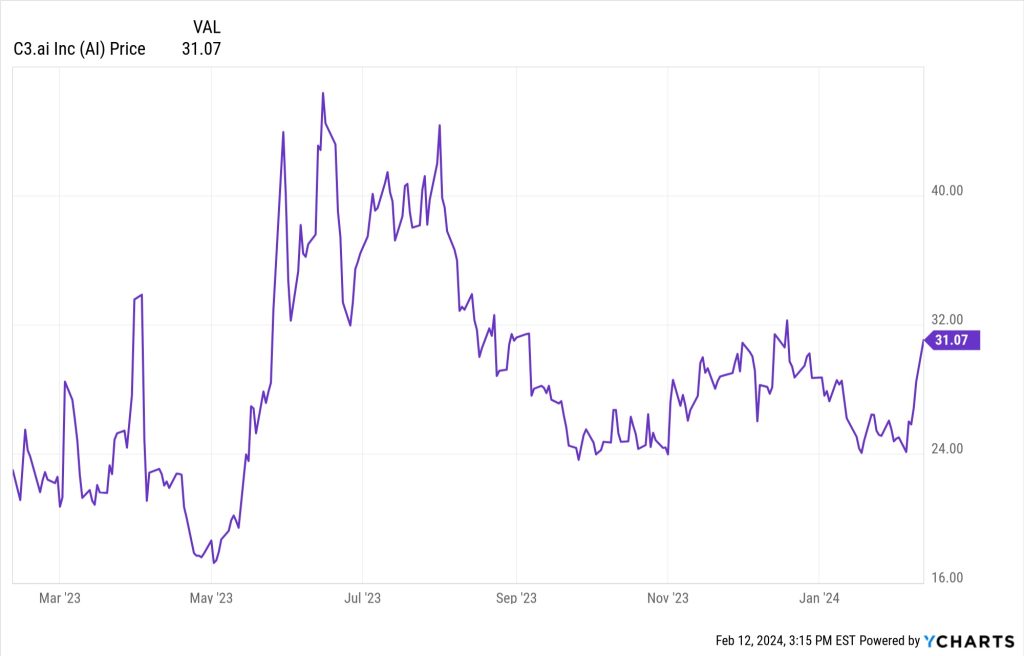
Daikin Industries (6367.T, DKILF, DKILY) was teased by Karim Rahemtulla in his Trade of the Day service ads about liquid cooling for data centers — quite similar to his pitch for Carrier Global (CARR) in that same ad, and the two companies are very similar (they’re the two global HVAC equipment leaders, trade at similar valuations, and both have some exposure to data centers as big cooling customers).
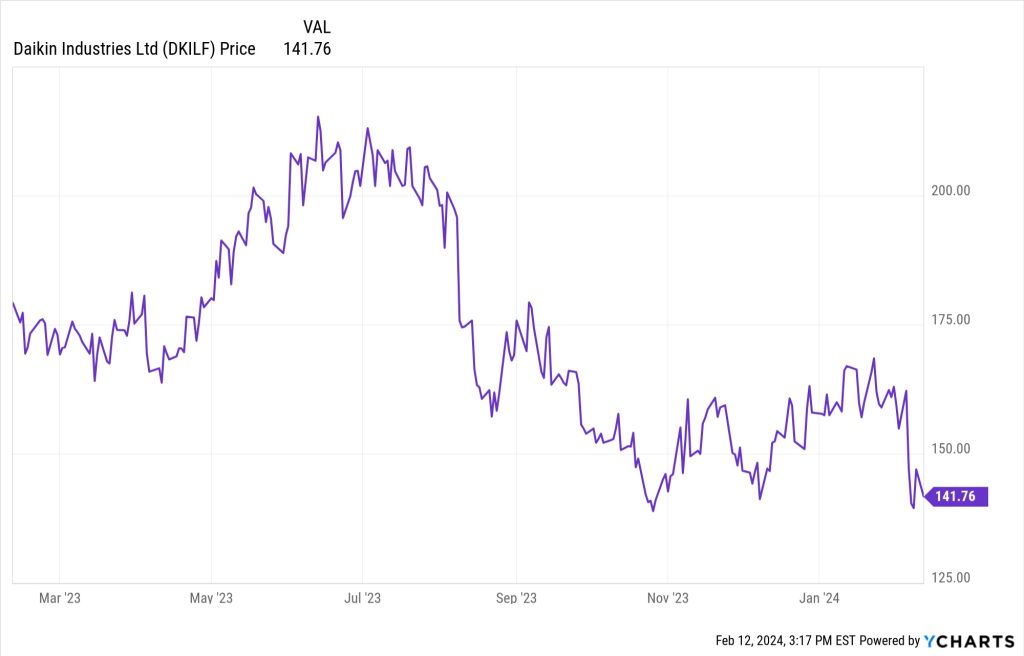
Deere & Co. (DE) was pitched by Porter Stansberry about a month ago as a “fail-safe way to play AI” because of their use of artificial intelligence for (mostly) autonomous and automated tractors and farm equipment. It was at about $400 at the time, and pretty inexpensive for a technology leader, though also much more expensive than all of its near-peer farm equipment competitors around the world. Here’s a little bit of what I said at the time:
“They have built up a strong stream of recurring revenue as they sell software and service on top of the equipment, and enjoyed great pricing (not unlike the auto makers) in recent years, though there seems to be a widely-held belief that the gravy train is slowing, at least for a little bit, probably mostly because of the impact of higher interest rates on the farm economy and on capital equipment sales.”
He continued to pitch Deere as the year went along, his special report promo in late November called it the “Apple of Agriculture” when he was selling the idea of buying “AI Railroad” companies that benefit from AI instead of being direct plays on artificial intelligence software or hardware.
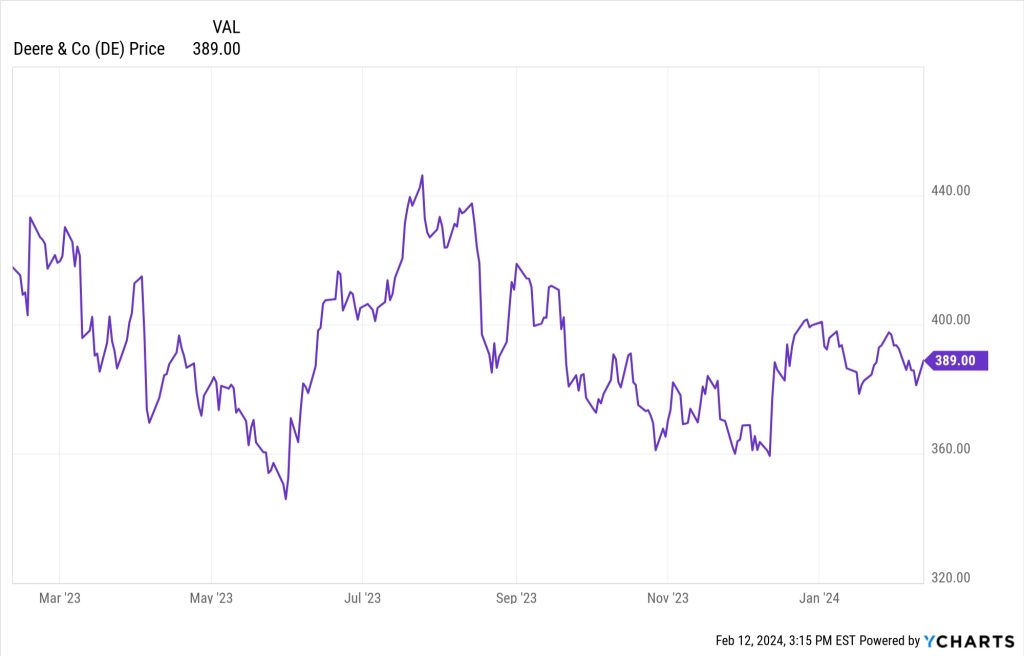
Digital Realty (DLR) got the “income” version of the A.I. spiel from Jim Pearce at Personal Finance back in early July, at around $114… this is what I said about that at the time:
“This is a pitch that the surge in demand for AI will lead to more need for data, which should benefit the companies who own and manage data centers and lease out that space. The “AI Enabler” he teases is Digital Realty, which is the oldest data center REIT, and is currently in a little bit of strategic reset to deal with rising interest rates — they have increased their dividend every year since going public in 2004, but they so far have kept the dividend flat over the past six quarters, and sold a bunch of stock and some assets, as they try to make sure they can deal with their capex needs and the debt maturities that will come up over the next few years. They face the same challenges as a lot of the other very large REITs, as their cost of borrowing gets more expensive and they have to issue more shares at higher dividend yields (and therefore lower prices), which dilutes existing shareholders a bit… maybe they’ll be able to become more efficient or raise their prices more than they have recently, to improve per-share cash flow and let them get back to raising the dividend, but for the past few years it has been a slow grower, and the current interest rate environment makes me pretty cautious about DLR and its near-peers in the “technology infrastructure” REITs — they have great assets, but it’s hard for them to raise prices fast enough to keep up with their operating costs and their interest bills. Investor sentiment about DLR over the next year or so probably depends mostly on whether they can raise their dividend in the next quarter or two (next announcement should be mid-August), and on what happens to prevailing interest rates — good news is certainly possible on either front, but I don’t know how likely it is — right now, they seem like a very average REIT, with a yield of 4.25% and a dividend that has gone up about 4-5% per year over the past five years.”

Docebo (DCBO) was the stock that the Canadian outpost of the Motley Fool said “could be the next NVIDIA” in a barrage of late-August ads, when the stock was around $42 — the AI connection is so far pretty limited, though that could change. Here’s what I said at the time:
“Docebo is involved with AI but in a fairly limited way thus far, developing AI systems to help them create better learning and training programs for their corporate customers (Docebo sells a cloud-based learning management system for education and development of employees). I don’t know if they’ll be an A.I. barnburner, but they do have solid longer-term contracts for their SaaS platform, with growing revenue and good customer retention, so it’s quite possible that they’ll be able to grow into their fairly rich valuation, especially as a small company.”
DCBO also made it into Motley Fool Stock Advisor Canada’s list of smaller A.I. stocks that was pitched a few times last Fall — the Canadian fools used Docebo as the headliner of their own “A.I. Disruption Playbook” in November, which is all small-cap stocks (the US Fool’s similar Playbook is all mega-cap stocks). The ad continues to make the rounds now.
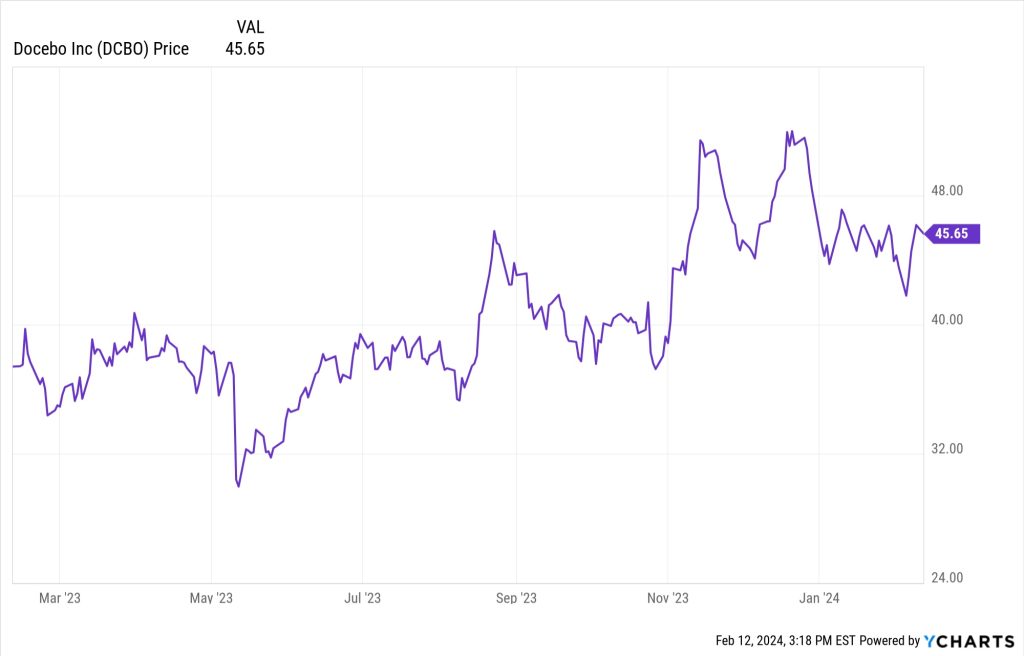
Evolv Technologies (EVLV) was pitched by Shah Gilani in August at around $6.25, as part of his “Three AI Breakthrough” stocks ad — this one was called a “Public Safety AI” story, and we’ve been teased with so many of these security screening stocks over the years, all of which turned out to be junk, that I’m always a little cautious with such ideas. Here’s how I described them at the time:
“Evolv makes security screening hardware, mostly for stadiums and schools at this point, and they have had initial success in building a pretty good customer base, and it should have a good cash flow profile because of the longer-term contracts of these systems and the ongoing subscription fee and upgrade potential, though it’s not yet big enough to show any real scalability in the business.”
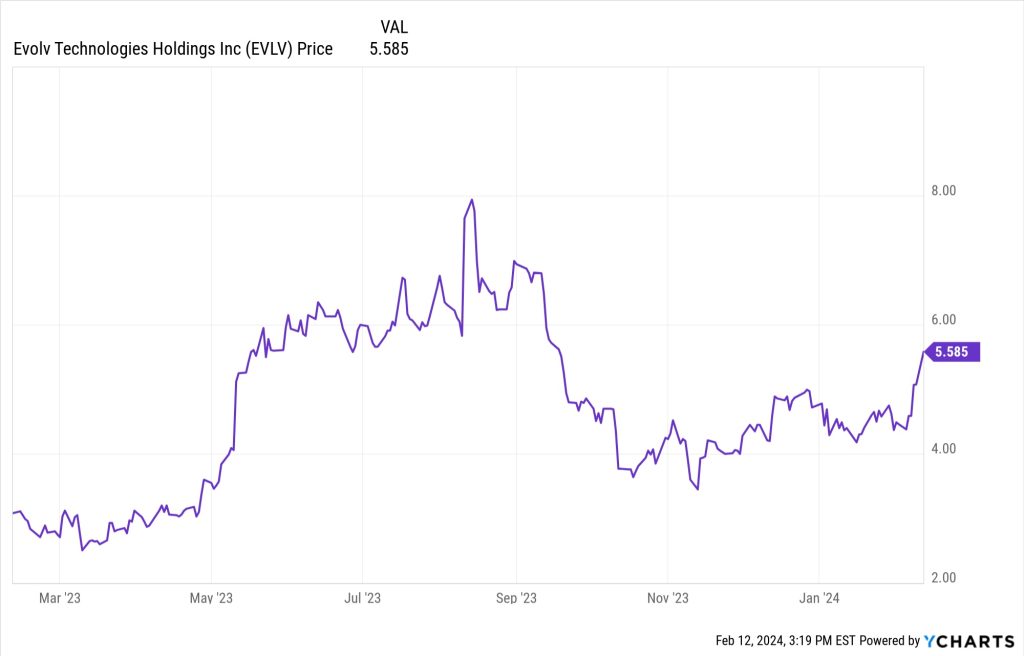
Excscientia (EXAI) was pitched as a “leading AI drug discovery” stock by Keith Kohl — he called them the “Algo Meds” leader in an ad we covered just a few weeks ago. The second-best match for that tease was Recursion Pharmaceuticals (RXRX), which we’ve also briefly touched on before (scroll down for that one).
Here’s how I summed up that one…
“AI drug discovery stocks will almost certainly require patience — even with a little help from artificial intelligence, the drug development and approval process requires finding and treating sick patients and tracking the results over time, so it moves pretty slowly and costs a ton of money. As is always the case with biotech, I do like the long-term royalty potential (most drug discovery firms negotiate a royalty on any drug they discover which a partner develops), and I agree that Exscientia sounds pretty compelling as a long-term speculation, but I try to moderate my interest in that far-future revenue with the fact that I am way out of my league on the science side, so if I buy these stocks that probably means I’ll be buying them from someone who knows a lot more than I do… which does not feel like a great idea. “
More recently, I wrote about a similar teaser pitch from Alex Green at the Oxford Club, who said that he thinks Exscientia (EXAI) “will become the most important AI company in the world”.

Fortinet (FTNT) was the cybersecurity company teased as part of Louis Navellier’s “AI Blueprint” late last year, and it’s a stock he has teased in the pre-AI days as well as a a cybersecurity leader. Pretty much all the leading companies in this space use some AI to try to keep up with the black hats, though CrowdStrike (CRWD) has also been talked up as an AI beneficiary and has had a much better year than FTNT — CRWD was teased in 2023 by the Motley Fool, though not specifically as an artificial intelligence play.
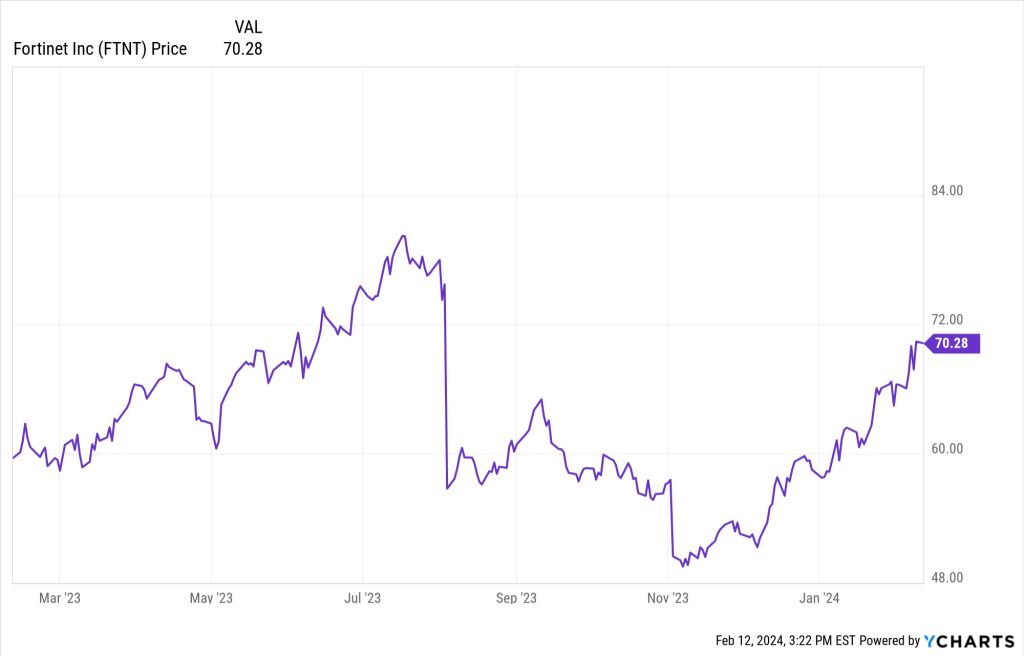
FuboTV (FUBO) was teased as “the Great $2 AI Moonshot” by LikeFolio Investor in ads that we covered back in July, when it was around $2.80. They also called this one an “AI TV” stock, and they pitched it largely because they saw it getting a groundswell of social media attention.
FUBO has fallen HARD in recent years, after an initial surge of enthusiasm when they went public… here’s what I said about this pitch back in July:
“FUBU has a little bit of an AI connection, at least tangentially, in their ability to personalize streaming TV and do things like recognize players on the field in a game. At heart, FUBO is a ‘cable TV replacement’ whose sports focus is a way to stand out in marketing (though all live streaming options focus on sports, because advertisers love live collective events), and I have a hard time believing that they can compete with Alphabet and Disney in live streaming, given the cost of content rights, but it’s not impossible — they just reported their first two quarters with a positive gross margin, so they can at least charge their customers as much as it costs them to deliver the content now, for the first time, which is a hopeful sign. Not convinced, personally, even with pretty good growth I’m not sure they can improve their margins fast enough to become sustainably profitable in the future, and their limited AI work is not enough to make an obvious difference, but FUBO at least looks a lot better today than it did when I first looked into the stock two years ago.”
FUBO has lately gotten clobbered by the rumored launch of a mega-sports streaming service by several of the larger players, which might further dent FUBO’s so-far-failed attempt to distinguish its streaming platform as the most sports-focused option. They’re losing out to YouTube TV at the moment, thanks in part to YouTube’s NFL deal (Sunday Ticket), but they’re really losing out to pretty much all the competition, they just don’t seem to have the scale or the money to compete with Hulu, Amazon Prime, YouTube, or even Paramount/CBS.

GSI Technology (GSIT) was teased as the “NVIDIA Killer” last year by Keith Kohl’s Technology & Opportunity newsletter. This is an old seller of military-grade memory that began to transition to focusing on developing what they call APUs (Associative Processors) for AI four years ago, designs that use memory more efficiently, reduce CPU bottlenecks, and increase speeds. Their initial product (Gemini I) apparently benchmarked well but has had limited orders in its first few years, and a much more powerful new chip (Gemini II) is about to start the initial testing process (they expect to have the first chips to test “early this year” and have benchmarking data available in the summer).
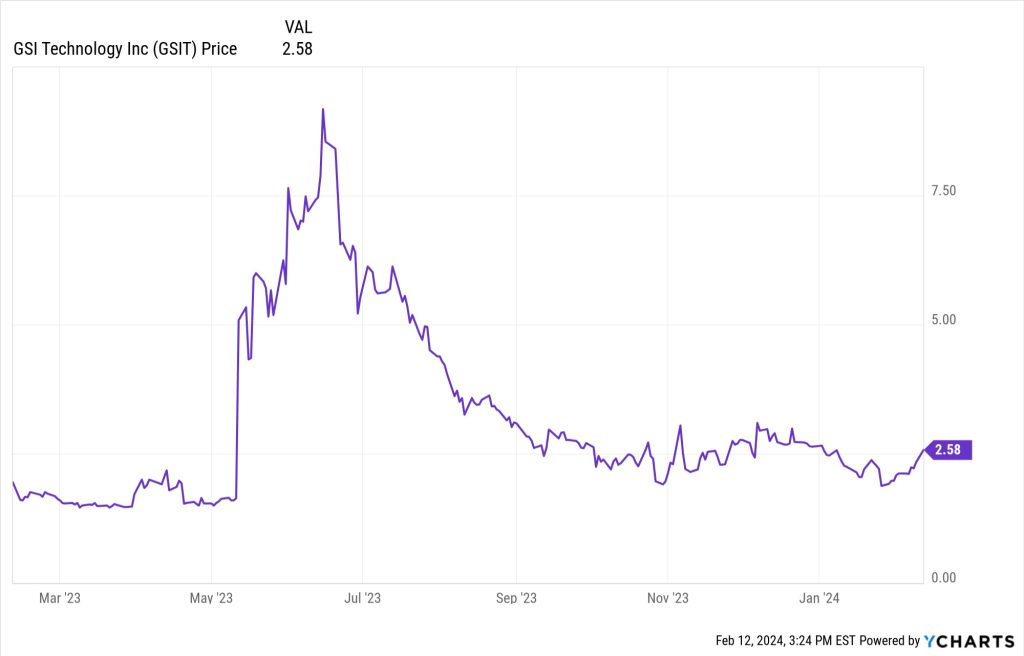
Hon Hai Precision Industry/Foxconn (HNHPF in the US) has been teased by Alexander Green at the Oxford Club as his “single stock retirement play” since mid-2018… but this year, he started changing his ads a little to call it a “hidden AI stock” as well, mostly because, as a contract manufacturer, they also assemble some of the servers that companies are buying up to fuel their AI ambitions (true, but this is by definition a high-volume manufacturer that’s been driven by hit consumer products, particularly the iPhone, for decades, and that server demand is nowhere near enough to make up for falling or decelerating sales of laptops and smartphones in recent years). The stock is largely unchanged since I last wrote about it — here’s how I summed up my most recent thoughts on that stock, which has been underwhelming for a very long time:
“They’ve remained profitable, revenue per share has grown by almost 50% in five years, and the next upcoming catalyst, with iPhone sales volumes down a bit of late, is the hope that they’ll have a new surge by building the Apple Car eventually (or other electric vehicles), or that growth in demand for servers will give them a little revenue boost (they build servers, too, though it’s a small part of their business)… but net profit margins have fallen by 16%, so earnings per share have only grown about 15-20% since 2018. 10-11X earnings is probably just about right as the maximum valuation for this stock unless it gains more leverage over the brands who hire them for manufacturing. Since Green started pitching it as the “One Stock Retirement Plan” in mid-2018, the stock has provided a total return of about 32%, with all but 3% of that from dividends, less than half of what you would have earned from holding a S&P 500 index fund (79%)”
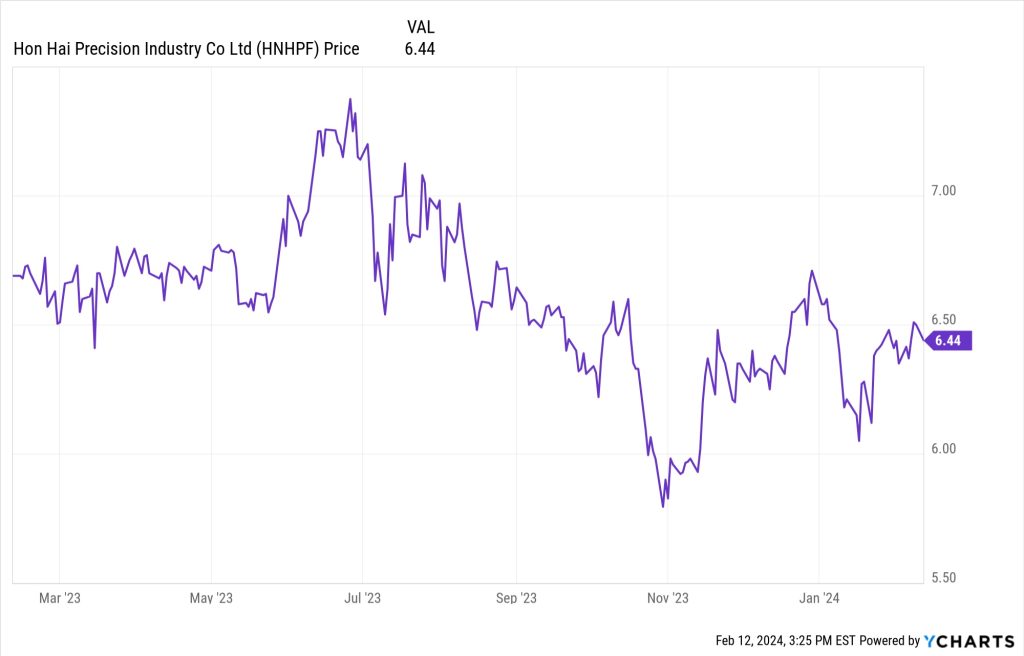
IonQ (IONQ) has been pitched by Luke Lango and his ilk in the “next big thing” business for a while now, everyone wants to get in early on whatever commercial quantum computing ends up looking like several years from now, and IONQ has been the most mature “pure play” on that theme. He also extended the argument to say that somehow the increased computing power of quantum computing will lead to those new machines dominating AI processing, though that strikes me as even more of a “way off in the future” argument. The latest pitch of his on that front was back in March, at around $5, so it has done well. The first tease of his that we covered wasn’t technically an “AI” tease (this was the “Area 51” pitch he was making early in the year, if that rings a bell), but IONQ was also teased in November as Lango’s “Top AI Moonshot”
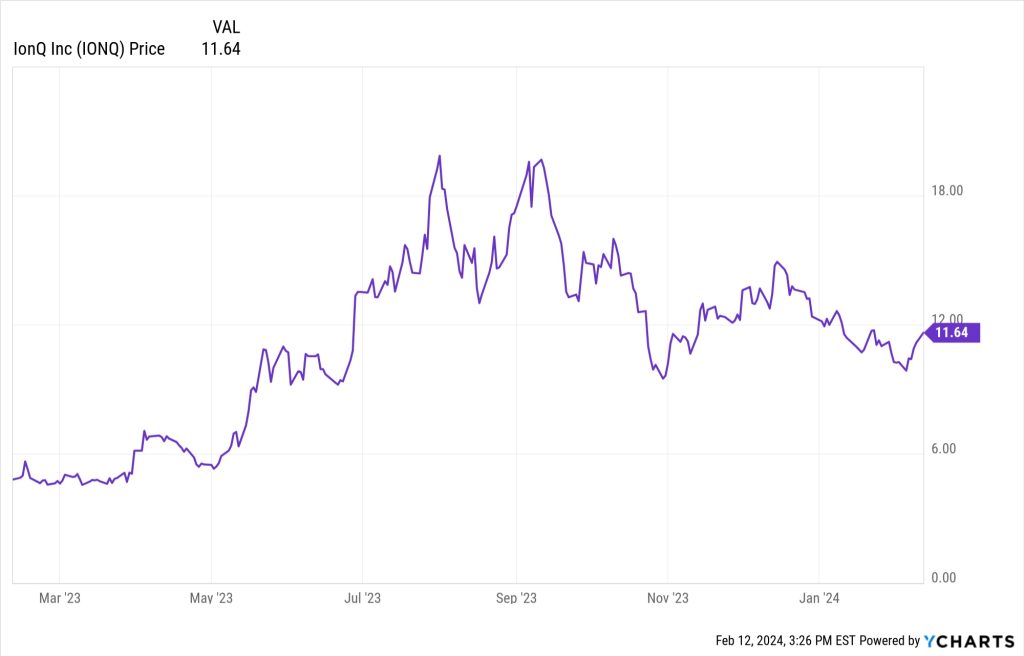
KLA Tencor (KLAC) was teased by Louis Navellier in December as an “AI Blueprint” play on the semiconductor market, largely because the need for more complex AI chips will increase the demand for KLAC’s chip testing equipment.
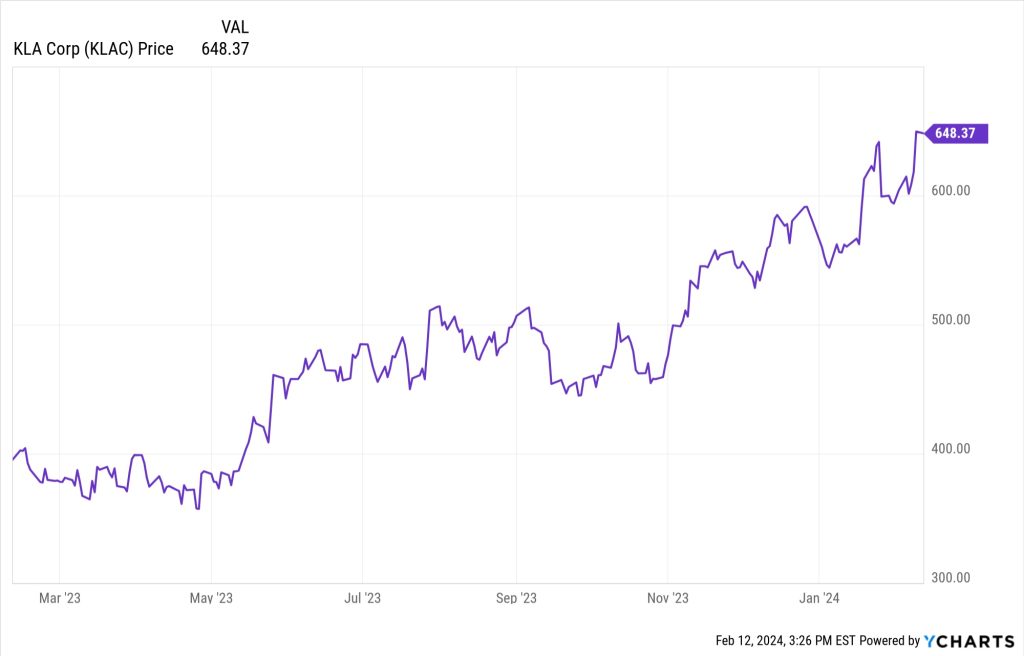
Lam Research (LRCX) is an equipment maker for the semiconductor industry (as is ASML, noted above), and like most such companies Taiwan Semiconductor (TSM) is one of their most important customers… they were teased as the “Cisco of AI” by Teeka Tiwari as a secondary pick in his “Elon’s supplier” pitch for TSM, in ads that started running back in September.
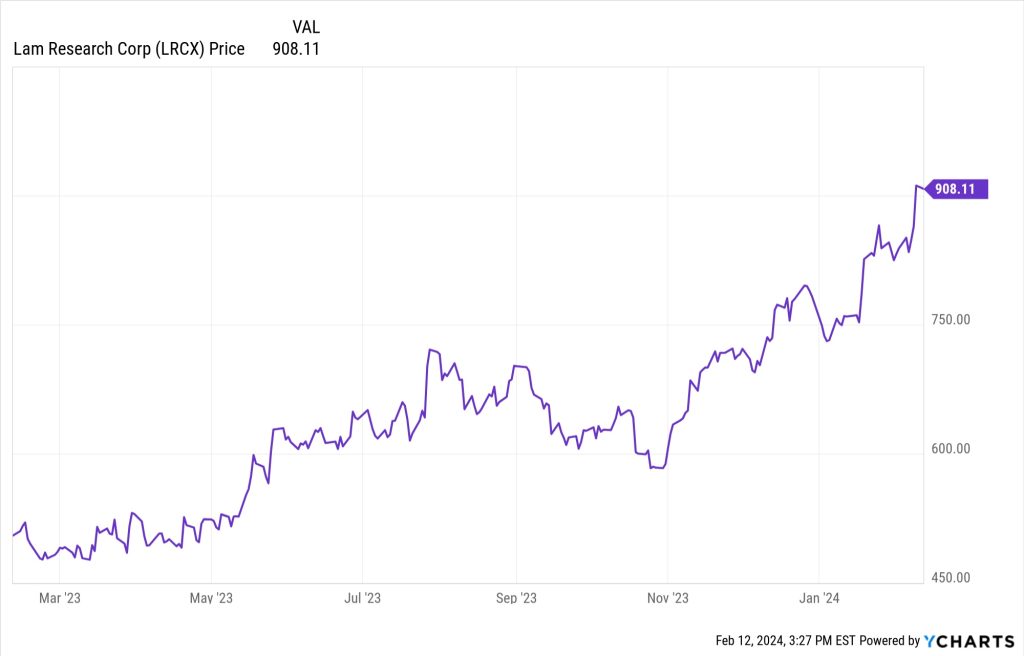
Meta Platforms (META) is one of the leaders of AI but hasn’t been one of the most-teased names in that space over the past year — the only heavily promoted teaser ad that focused on META recently was the Motley Fool’s “AI Disruption Playbook” ad for Motley Fool Stock Advisor.
META has been in that “playbook” for years (it was originally NVDA, GOOG and META, then they started giving away NVDA for free and added AMZN as the other “secret” stock. And among the very large cap companies, META has been the biggest non-NVDA winner over the past year… though that may primarily be because it was quite beaten-down and hated before that. It’s also arguably the cheapest or second-cheapest of the mega-cap tech stocks (depending on the day, GOOG might be cheaper).

Microsoft (MSFT) has been, of course, the poster child for AI over the past year, mostly because they are the biggest financier behind OpenAI, which launched ChatGPT. The stock was one of the first to surge in January, as the dreams of AI-fueled Bing taking on Google search got everyone excited, and it remains well above where it was in January — it’s also an obvious story, so not many newsletters tried to “tease” it, but Luke Lango’s teaser pitch recommending Microsoft (MSFT) in mid-July called it the “ChatGPT loophole” and implied that somehow buying Microsoft for that OpenAI exposure would be a “100X story”, and that seems like quite a stretch, but it’s at least a solid company without the small (by MSFT standards) investment they made in OpenAI. Here’s what I said at the time Lango pitched Microsoft:
“Yes, you could buy MSFT for that OpenAI exposure — but the impact will almost certainly be minimal in the next few years. If OpenAI increases in value by 500%, that would mean a one-time $50-100 billion boost for Microsoft, and that’s real money… but it’s also about what they make in profit in a normal year. Maybe it does better than that, but even a 100% gain for MSFT shares at this point would be a wild boom, we’re not talking about life-altering 10,000% returns (100X) for MSFT shareholders being at all feasible. Microsoft is obviously a great company, with a hugely successful and high-margin business as they dominate corporate computing in so many ways, but I’m not particularly interested in investing at this valuation (PEG ratio of about 3.0), and it’s hard to see any urgency to buy because the impact of OpenAI is unlikely to be dramatic on their shareholder returns from this point.”
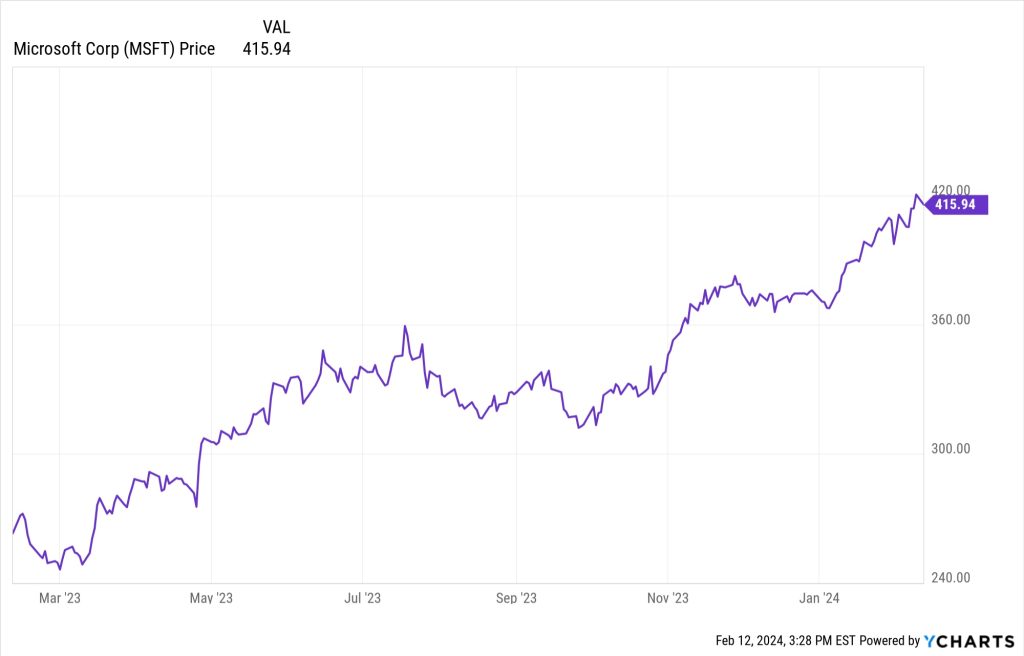
Mitek (MITK) was pitched as part of the Motley Fool Canada’s “Small-Cap Sleeper stocks for the AI Boom” pitch in mid-December, selling their pricey Market Pass service — the company primarily sells software for processing mobile check deposits, but their hope-to-grow business is digital ID verification… and that does use some AI, though I wouldn’t expect a mega-boom as a result. They’re still trying to dig themselves out of some accounting quicksand, so their numbers are not up to date and there’s some understandable investor trepidation… but they’re in better shape now than they were last Summer, and are probably reasonably valued again if we can trust the numbers.
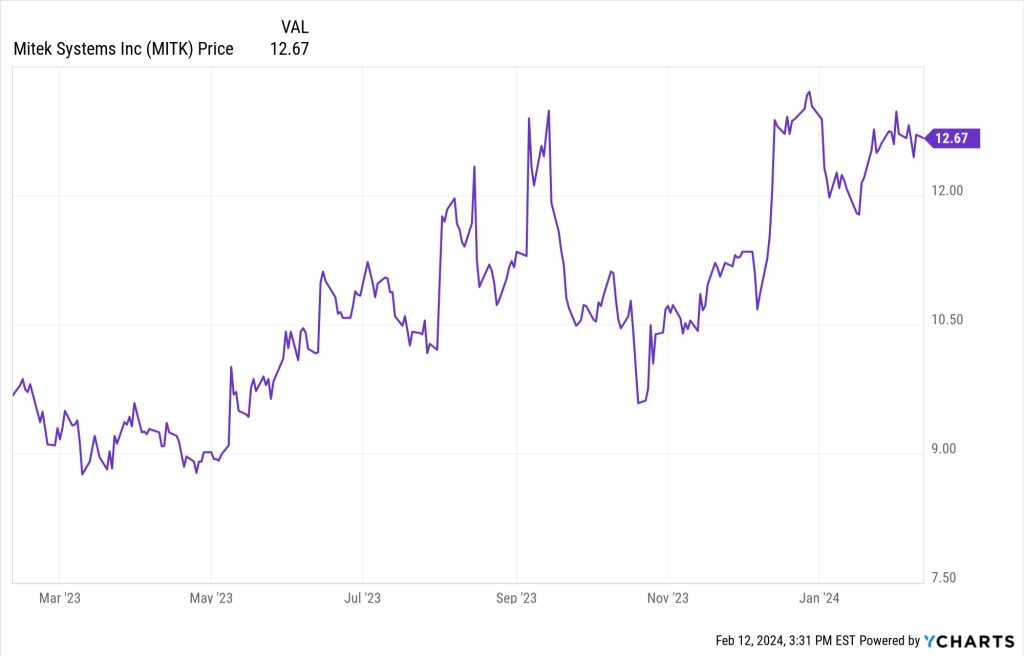
Mobileye (MBLY), which was bought out by Intel years ago and then resurfaced when they spun it out as an IPO late last year, was, according to several Gumshoe readers, one of the Luke Lango “SUPRMAN” AI picks, though I didn’t cover it at the time (he didn’t really drop clues about the “MAN” part of that acronym, I had guessed that his “M” in that acronym might be Micron (MU), since AI projects and chipsets need a lot of fast-retrieval data storage in addition to the “thinking” chips). They’re primarily a play on hardware and software to support autonomous driving, which was one of the first kinds of AI to get a lot of attention in recent years, and that’s a very competitive space (though they’re the largest current player). They trade at about 50X adjusted earnings at the moment, which is a pretty stiff valuation for a company that’s expected by analysts to grow earnings at 15-20% per year, and the biggest driver for the foreseeable future is likely to be car sales.
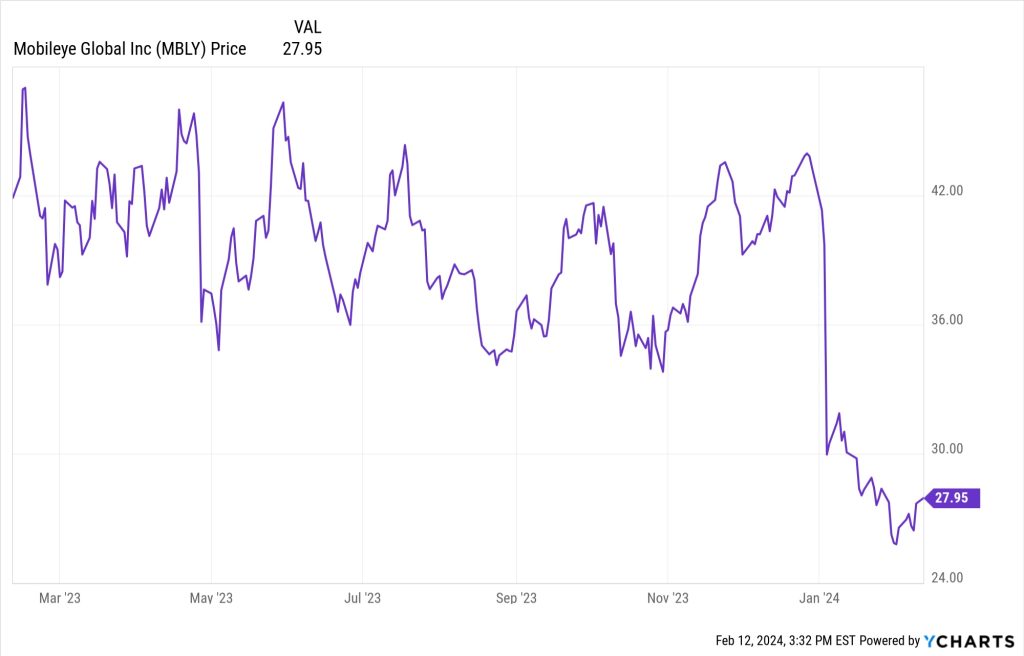
NVIDIA (NVDA) is, of course, the real poster child for AI — and the stock that put the whole market into hyperdrive when they announced just how absurd the demand was for their AI chips in their first quarter report, back in May. The stock has been recommended by a lot of newsletters over the years, with many of them keying on the AI market as a big future demand driver, with the Motley Fool the first big teaser of NVDA shares back in 2014 and has consistently teased this as an AI stock for many years, part of their “AI Disruption Toolbox” more recently, but if we only go back to the post-ChatGPT days these are the folks who pitched the current market leader:
Whitney Tilson teased NVDA in January, though that was technically for his “EoD” teaser ad, which was mostly about e-commerce and the on-demand world. The stock was just a hair under $200 at the time. He also pitched NVDA as one of his four A.I. stocks after things heated up a bit more, in April at about $270. Both have obviously done well, with NVDA soaring so high this year.
And Louis Navellier pitched NVIDIA again in July of this year as the “A.I. Master Key”, which was probably the ultimate statement of the obvious, though, like many pundits, he has also touted the stock many times in the past (his first teaser pitch for NVIDIA that I saw was in late 2017, though that was focused on NVIDIA GPUs being the “master key” for cryptocurrency miners, not AI projects).
If we go back a little past the turn of the year, to late December of 2022, Andy Snyder at Manward Letter was also pitching NVIDIA as one of his “metaverse” stocks when it was around $150 — that ad must have been written before ChatGPT was launched and fired everyone up, but he did mention AI in the ad, so he gets a spot on the list (his other metaverse picks at the time were Shopify (SHOP) and Unity (U), which are also on our list today but weren’t really talked about as AI-specific ideas in his ad). For what it’s worth, I’ve owned NVIDIA for years, and it has been a favorite pick of a great many newsletters since at least 2016-2017, but I also sold some in the run-up earlier in the year as the valuation got (and remains) pretty nutty (my timing with NVIDIA has never been good, but the stock has been a huge winner in the Real Money Portfolio anyway).
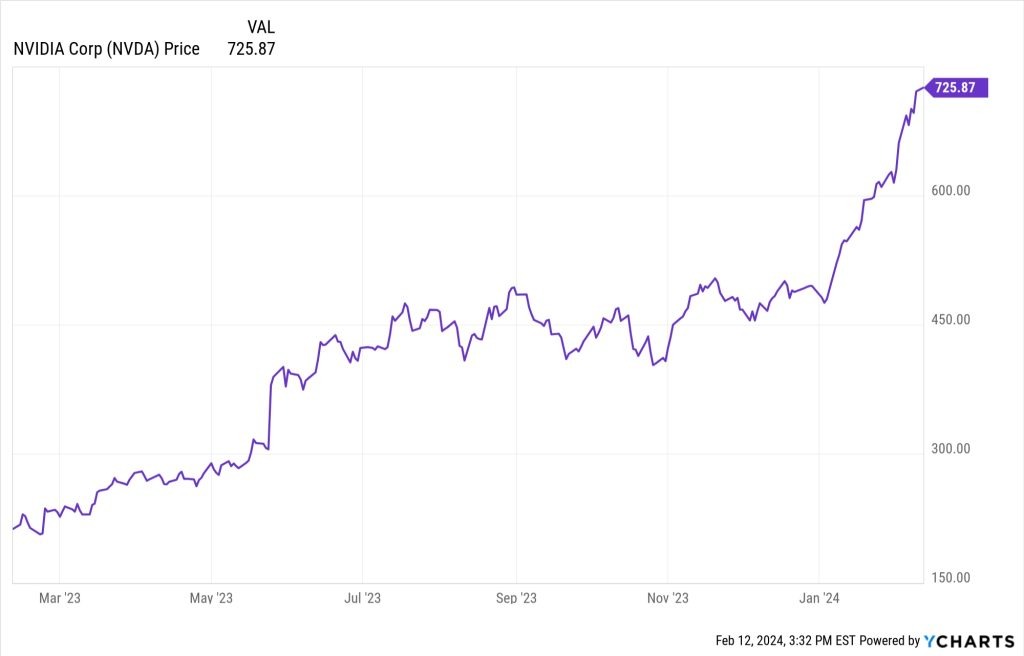
Palantir (PLTR) has long been popular as a “big data” company and a key contractor for government intelligence agencies (and increasingly for private business), but that’s not really so different from an “AI” company these days, the terms all blend together when you’re trying to push computers to make sense of giant data sets. It was touted as the “living software” secret weapon helping Ukraine by Dylan Jovine starting back in March, at around $8, and he was still pushing it with essentially the same language and the same ad with the stock around $19 in early August.
Shah Gilani has been pitching Palantir, too, though I haven’t written about that particular spiel… and Luke Lango included Palantir as one of his “SUPRMAN” AI stocks that he teased in June. The stock dropped to my “reasonable” range near $15 for a while (I never bought it, personally), but has recently soared much higher after a very well-received “beat and raise” earnings report in early February.
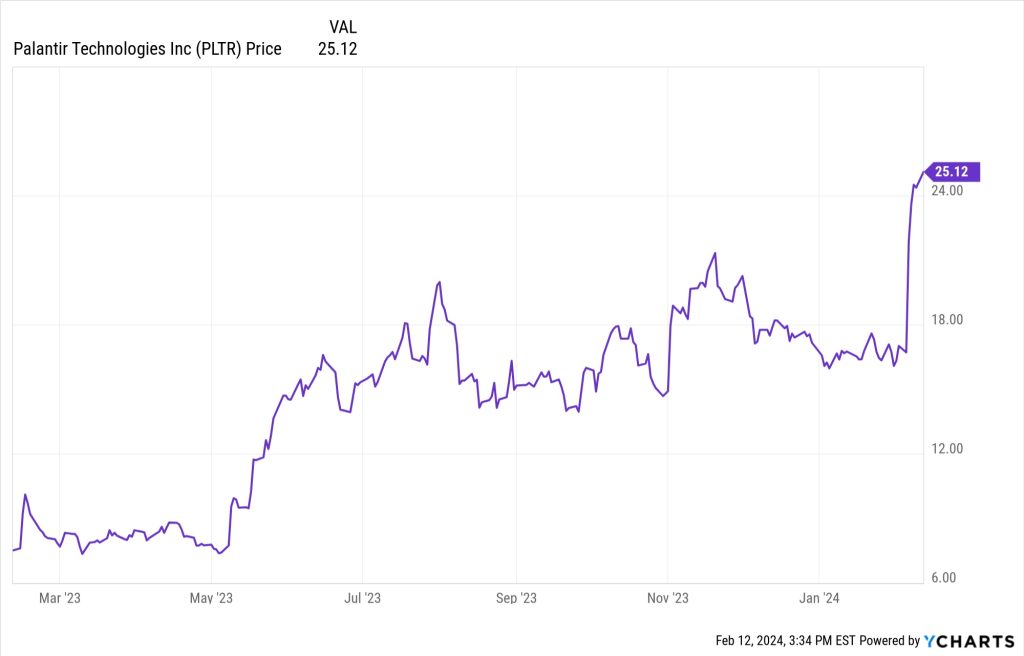
PayPal (PYPL) was pitched by Porter Stansberry for his Big Secret on Wall Street newsletter in late November, it was one of his “forever companies” that also benefits from AI, so it fell under his “AI Railroads” tease (his special report called it, “The $1 Trillion Powerhouse”). The argument from Porter was largely that PYPL is cheap and owns an incredible group of fintech companies, including Braintree — the cheap part is undoubtedly true, PYPL still trades at a steep discount to the broader market (about 12X forward earnings), despite being a long-time fintech survivor and an industry leader.

Propel Holdings (PRL.TO, PRLPF) was pitched as part of Motley Fool Canada’s “A.I. Disruption Playbook” promo in November (which hinted at several small AI stocks). Somewhat similar to Upstart Holdings (UPST), though much smaller, Propel is a fintech that says it uses A.I. to facilitate lending to lower-income borrowers.
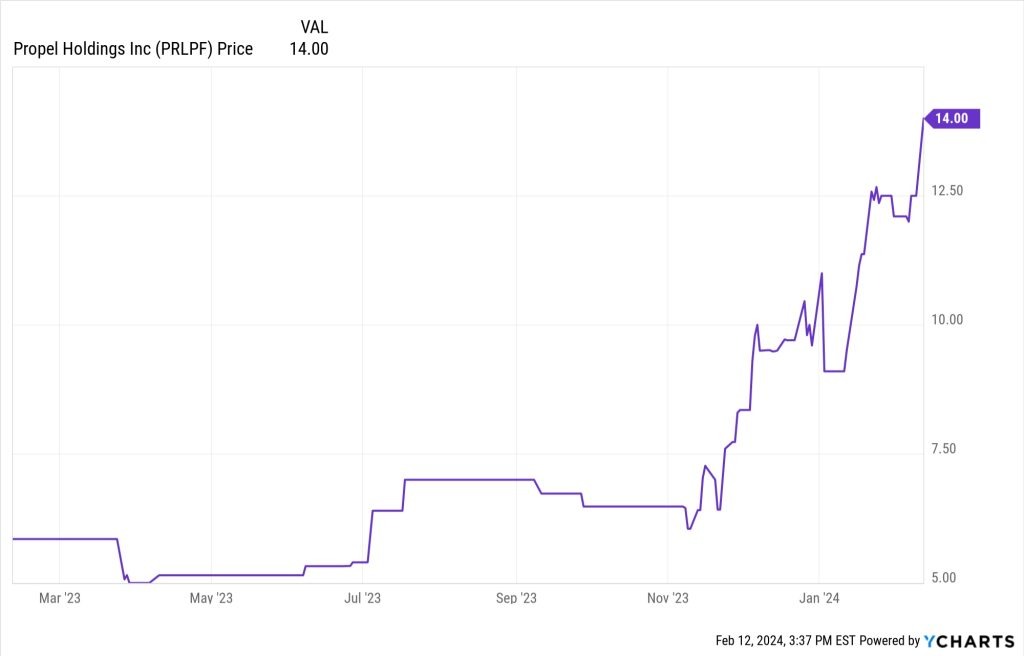
Recursion Pharmaceuticals (RXRX) was, I guessed, included in Luke Lango’s SUPRMAN tease in June, it is one of a handful of publicly traded companies focused on using artificial intelligence for “drug discovery” to speed up the search for new treatments. The stock briefly went bonkers a month or so later, mostly because NVIDIA partnered with them and bought a small stake in the company, but that has settled down dramatically since. This is a $1.4 billion company that trades at 25X revenues, so it’s not for the faint of heart — and their revenue isn’t likely to grow into anything meaningful within the next few years, so this is really all about the potential that their systems could develop drugs that turn into large royalty windfalls in the more distant future (AI drug discovery might be speeding up a lot, but the actual FDA approval process and the long time lag of testing for safety and efficacy in human beings, using clinical trials, is not going to accelerate as dramatically, so any drugs discovered by their system still have to slog through approvals).
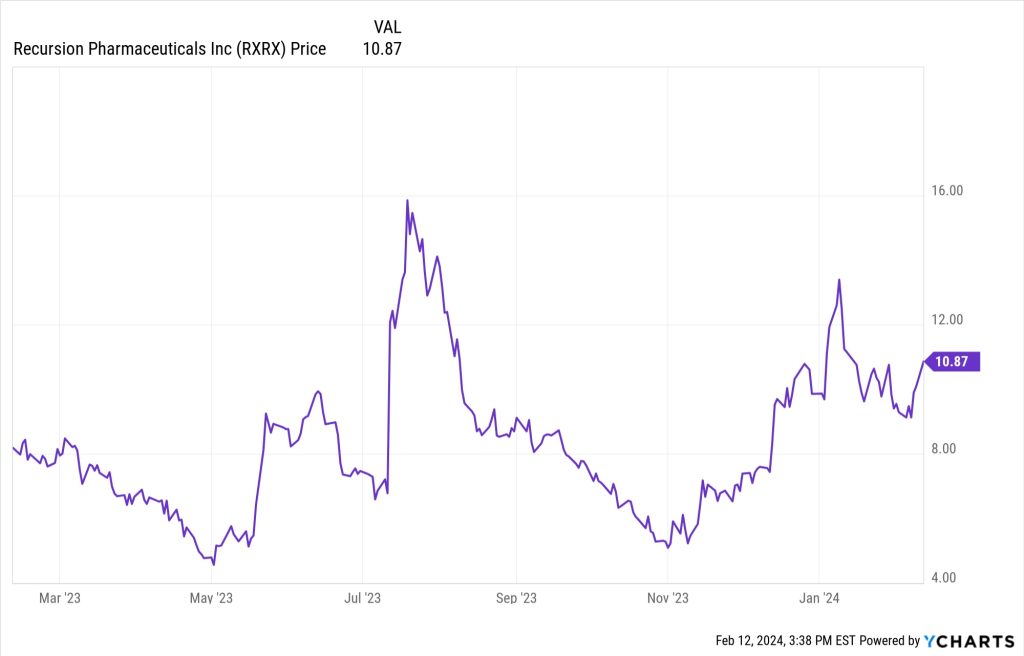
Shopify (SHOP) is obviously not really a “pure play” AI pick, but Whitney Tilson included it in his “four A.I. stocks” pitch in mid-April at about $48, and it’s a stock he had pitched in the past as well — they are using some generative AI to help their e-retailer customers create better store experiences.
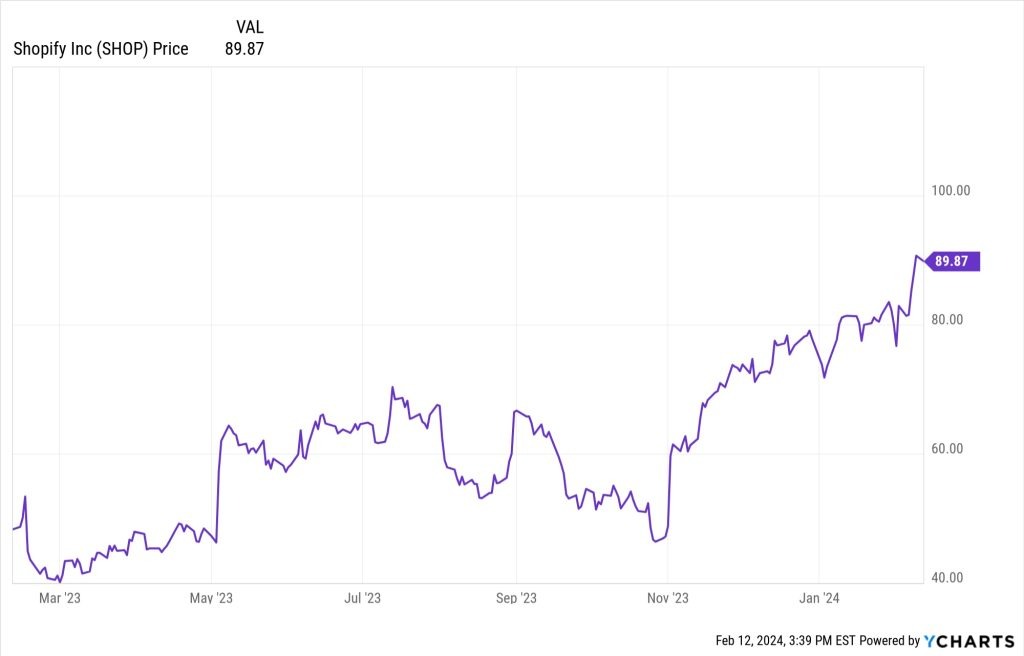
SkyWater Technology (SKYT) was teased as a winner of the “A.I. Wars of 2024” by Eric Fry in ads for The Speculator — more specifically he likely recommended options on SKYT, largely because of rising interest in building semiconductor manufacturing facilities in the US, and because of the likelihood that SKYT will be one of the beneficiaries of CHIPS Act funding when that finally starts to flow from the government later this year.

SoundHound AI (SOUN), formerly known as SoundHound, has been teased by a couple folks this year as a low-priced stock with AI exposure — Ross Givens pitched it as the “$3 AI Wonder Stock that Could Make You 75X Richer” in early May, and Jason Williams pitched that that buying the “tiny $2 stock” SOUN in late June would be “like buying Google in 2004”. Here’s what I said about HOUN on June 26:
“We’ve looked at SOUN before and my opinion hasn’t really changed — they think they’ll be close to break-even by the end of this year as new contracts come in, and they’re cutting costs and restructuring, but the revenue is just so low that it’s hard to turn the corner into becoming a viable business unless their partnership deals accelerate a bit. Not impossible, but not so interesting to me at 20X sales.”
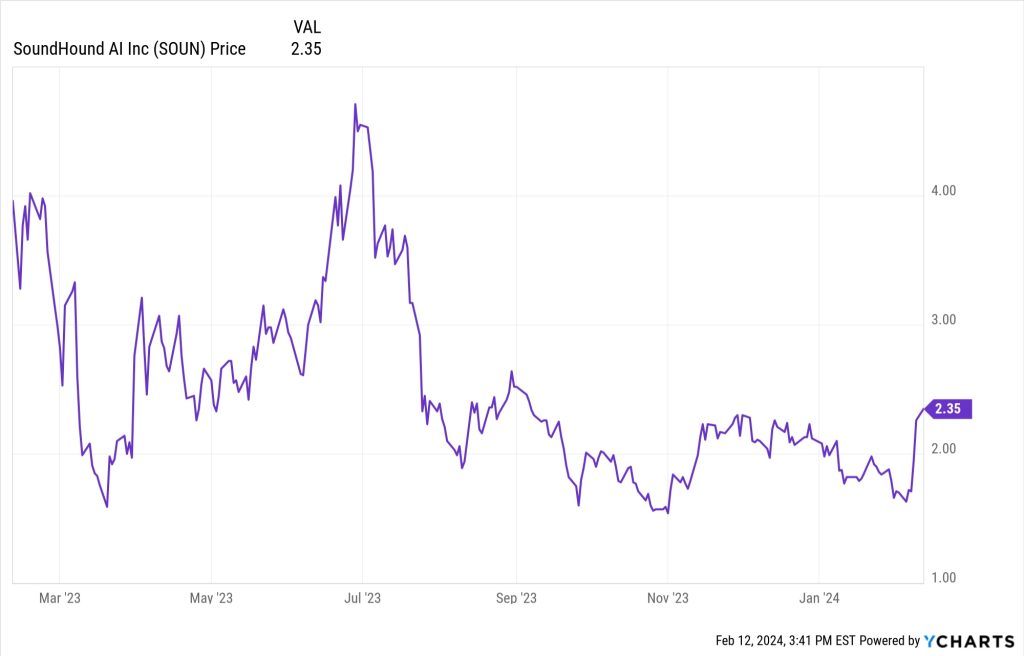
Super Micro Computer (SMCI) comes up often as a hot AI stock, and as a stock that pundits claim to have recommended because it has gone up so much — Louis Navellier has pitched the stock in the more distant past, but most recently it was featured in the “NVIDIA’s Silent Partners” tease from Weiss Research, covered here in January as a “saving A.I.” play on “NVIDIA’s crash” that they predict could happen by February 28, and Ian King might have teased it as his liquid cooling idea back in December.
Symbotic (SYM) has been pitched several times by Luke Lango over the past year, largely as one of a package of AI picks (he called it his “#1 AI Stock to Buy Right Now” in early June, but it was also the “S” in his SUPRMAN list of AI stock picks that was teased a little later on, and, though I haven’t written about Lango recently, it looks like it might also be in his more recent “acronym” pitches, like, according to one of our readers, his “Hyperscale AI to Buy Now” ideas.
Here’s how I summed it up in June:
“They are partnered with some large grocery and mass market retail companies for management of distribution centers, with a system of proprietary robots and software that effectively manages and breaks up pallets into pieces and moves them to the right place. The keystone customer is Walmart, which is committing to automating all 42 of their distribution centers, so that project, which will probably take 6-8 years, provide some visibility into future revenue and earnings. Relatively appealing as a real business, not just AI hype, though probably a bit too inflated by the AI hype and some huge revenue growth numbers in recent quarters.”
Symbotic was also hinted at as a pick by Ian King for Strategic Fortunes in December.
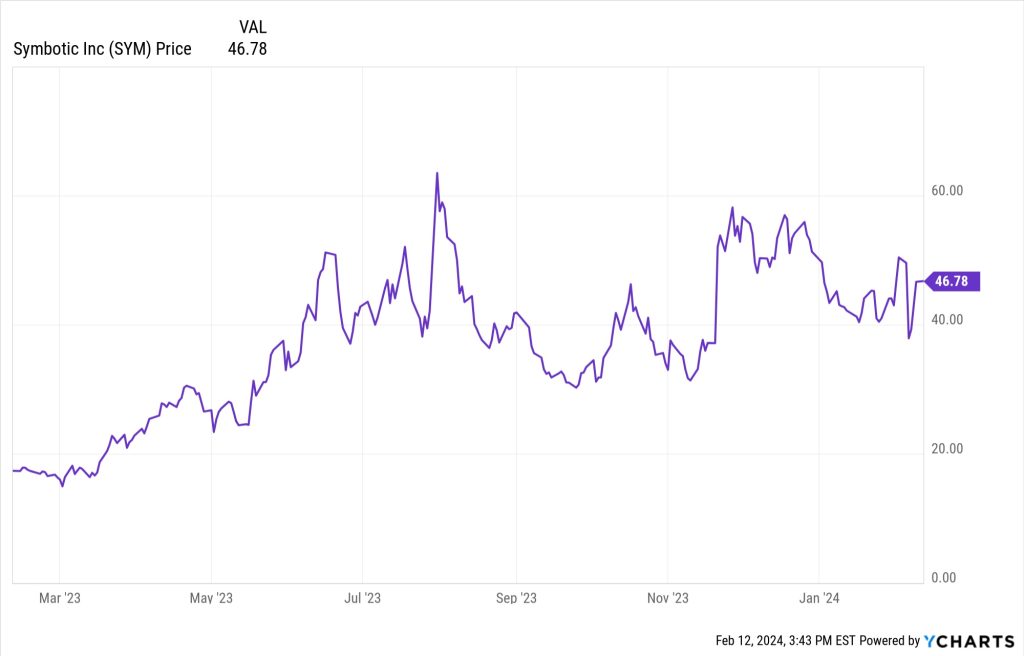
Synopsys (SNPS) was a freebie stock recommendation made by Luke Lango in one of his “AI Moonshots” ads in November. They are one of the two dominant providers of semiconductor design software, along with Cadence Design Systems (CDNS), and both are strong growth stocks and are valued as such. SNPS and CDNS are essentially a play on the trend of faster development of semiconductor designs to meet the AI challenge and of more and more companies designing their own chips (and presumably outsourcing the manufacture of them to foundry providers like Taiwan Semiconductor, Global Foundries, etc.)
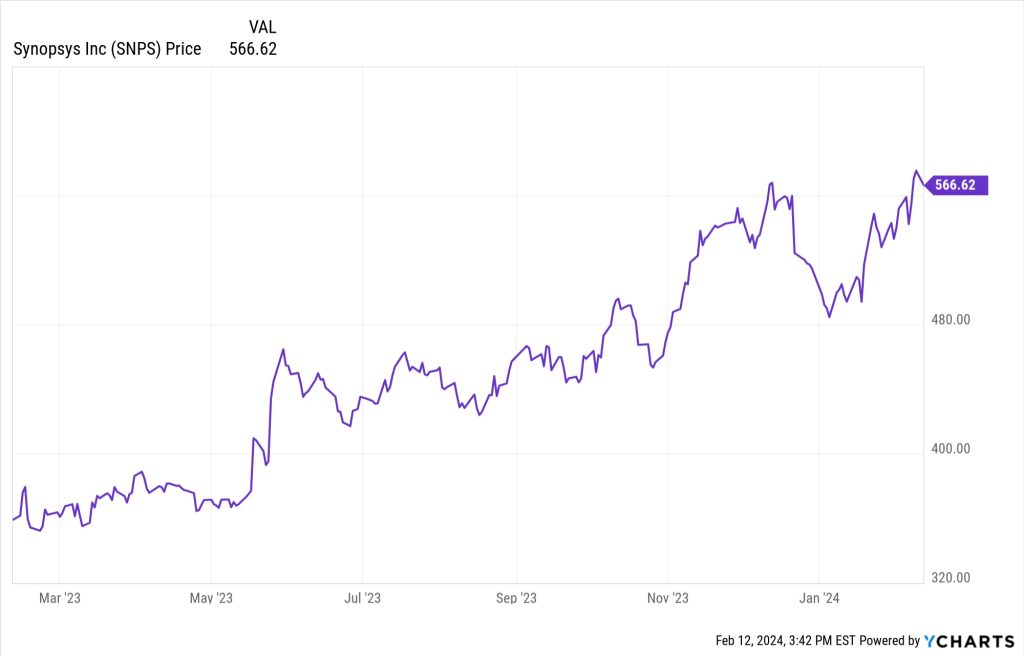
Taiwan Semiconductor (TSM) has been teased a few times as an A.I. pick, largely because they are the largest and most advanced foundry operator in the world and, more specifically, because they make essentially all of the high-end GPUs that are currently used for artificial intelligence projects (TSM is the primary manufacturer for both NVIDIA and AMD, as well as for Tesla’s AI chips and many others). The company has been under some pressure because they also make a lot of much-lower-demand semiconductors, (their biggest customer is Apple and they’ve been hurt by falling iPhone volume, for example), and is feared by many because of geopolitics and China’s saber-rattling over the Taiwan Strait… the loudest proponents last year were Teeka Tiwari, who pitched TSM starting in September in his “forget NVIDIA, buy Elon’s supplier” ads (filmed on site in Arizona, near TSM’s complex that’s being built in that state), and in October by James Altucher, who teased TSM as the maker of “The A.I. Crown Jewel” (because they build those NVDA chips), and TSM also featured as the key “NVIDIA silent partner” teased by Jon Markman in January.
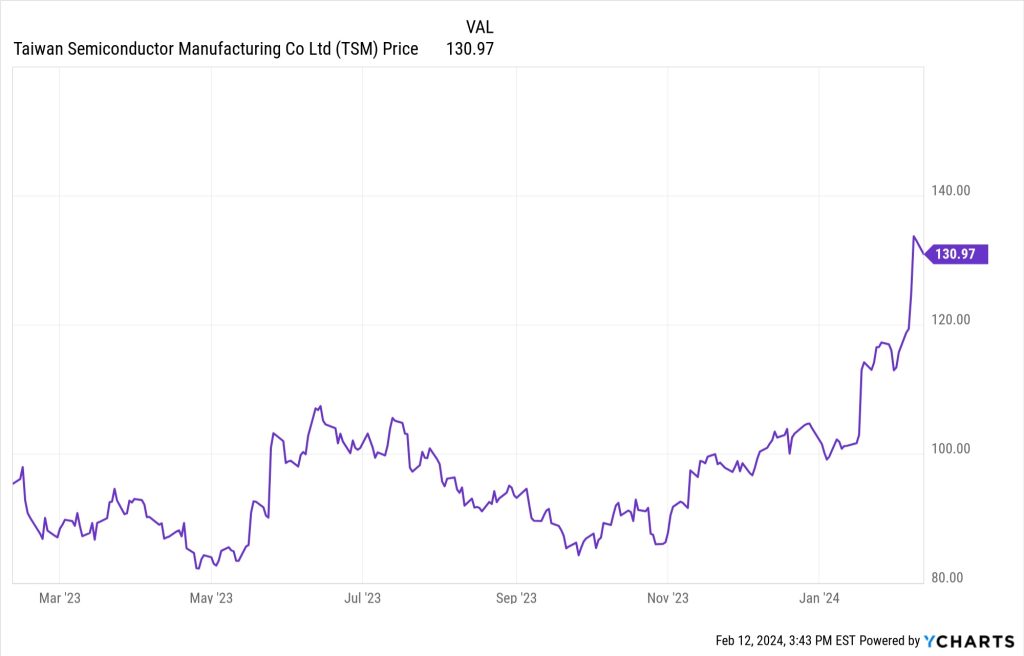
Thinkific Labs (THNC.TO, THNCF) was teased by Motley Fool Canada’s Microcap Mission as one of their “Microcap AI Sleepers” (the others were Docebo and Propel Holdings, which we’ve noted above, Thinkific was the only new stock in that mid-November teaser ad). This “holy grail of AI sleeper stocks” sells a platform that lets social media creators develop digital products to sell, like online courses… sort of an e-commerce middleman, so similar to Shopify in some ways, but for digital products instead of physical ones.

UIPath (PATH) was one of the more recent “new” AI stock teases to start this year, we covered it in January as Eric Wade’s “#1 AI Stock for 2024” (it was hinted at in the “Project Dojo” ads for Stansberry Innovations Report) — I described that as “an interesting SaaS company in business automation, just emerging into steady profitability now and with the potential to be a bit of a breakthrough story if AI enthusiasm heats up again.”
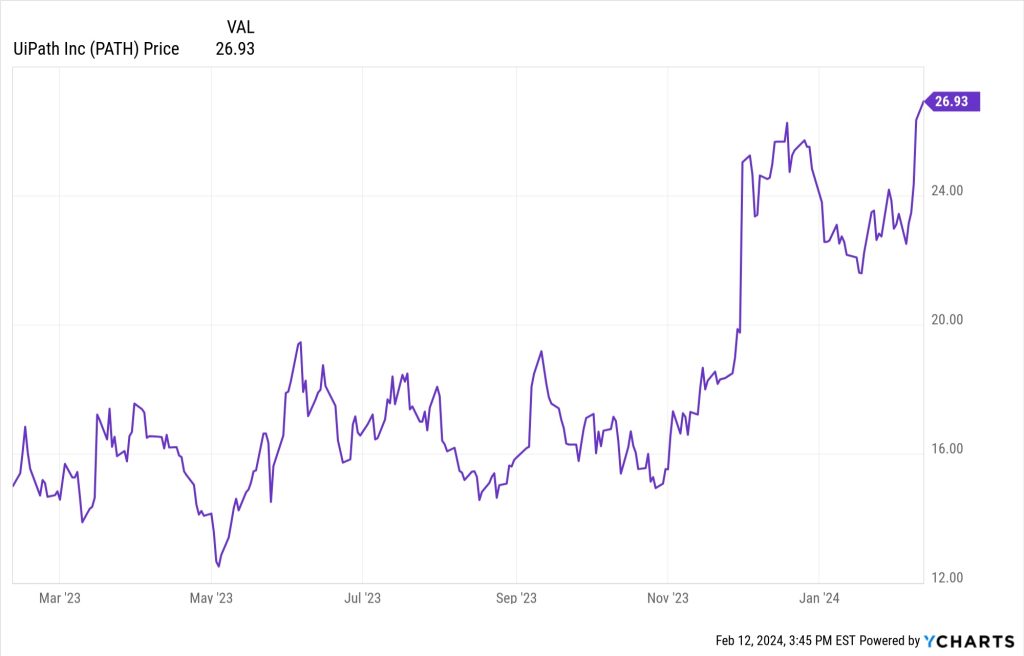
Ulta Beauty (ULTA) was another of Porter Stansberry’s “AI Railroads” stock picks, teased in late November as the “prettiest stock on Wall Street”— as with most of those “AI Railroads” picks (Deere and PayPal were the others), the idea was that AI might help the business of this market-leading retailer… not really that ULTA is in any way a pure “AI Play”.
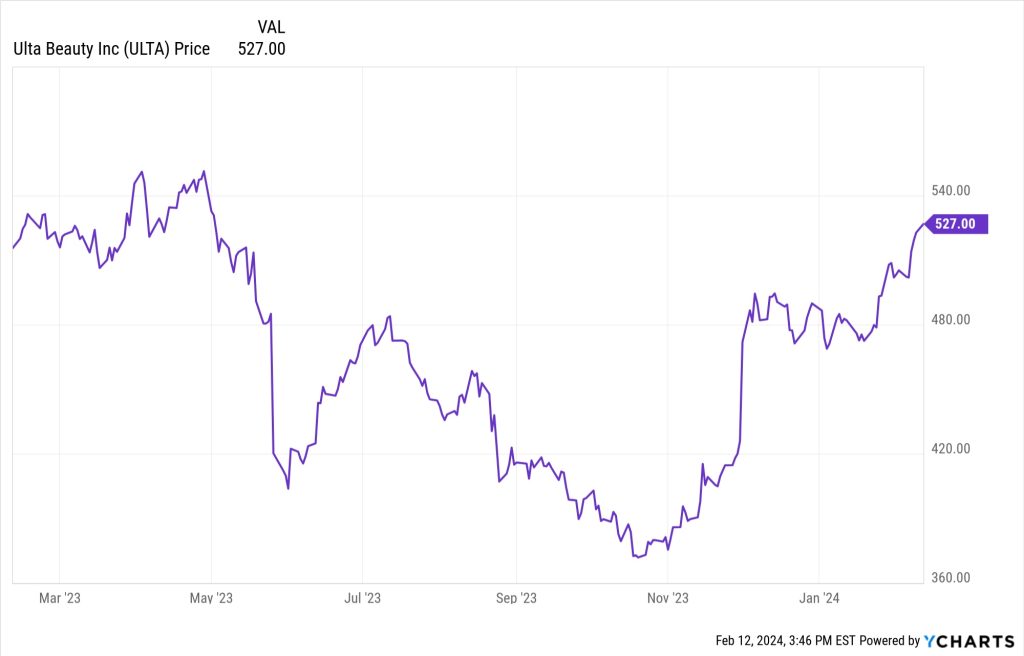
Unity Software (U) was another of Luke Lango’s “SUPRMAN” picks in June, when it was in the high $30s. The general idea was that as Adobe (ADBE) is adding generative AI tools to its creative software suite (Photoshop, etc.), Unity is doing something similar with its creative suite of real-time 3D video tools (used for immersive 3D video, mostly, but not entirely, for video gaming and entertainment customers). Here’s how I summed up my thoughts on that stock at the time (I do own a small position):
“Unity is not really directly an ‘AI stock’ in the public consciousness, though I guess it could become one…
“Unity screwed up their monetization platform last year, what they now call Grow Solutions, by effectively losing the data and having to rebuild it and also rebuild investor confidence. That put a pause on their march to profitability, and means they reporting odd pro forma growth numbers this year, but they do appear to be back on track now.”
They have had further challenges since then, with surprisingly large layoff announcements and a little hype about their potential connection to the Apple Vision Pro augmented reality headset, so the stock has been quite volatile, but is now back to about where it was in June when Lango pitched it.
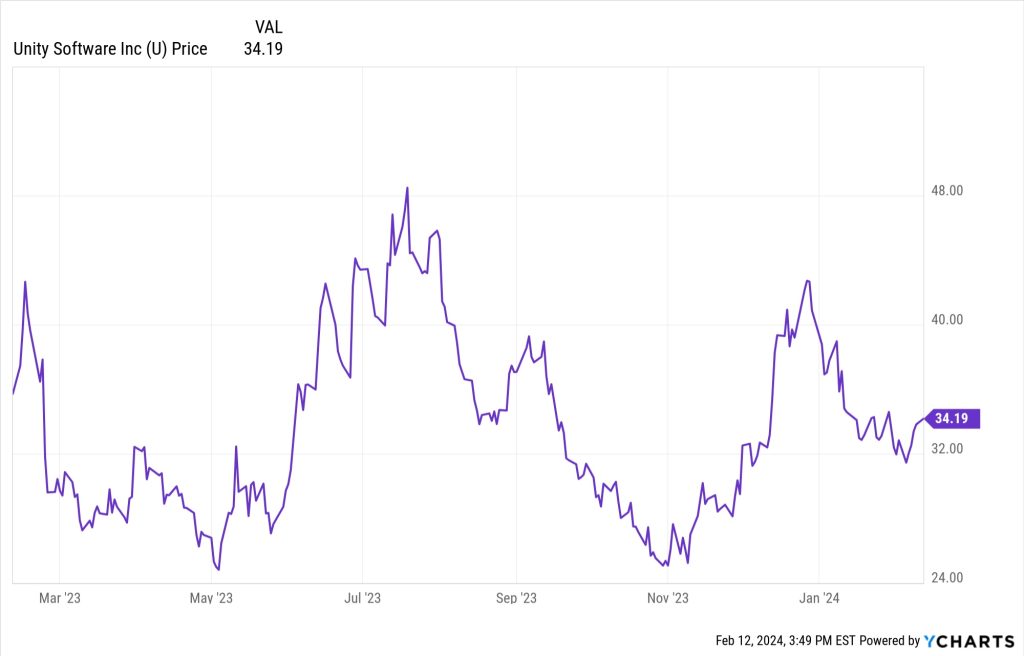
Verses AI (VERS.NEO, VRSSF) was one of the more self-promotional AI “story stocks” early in 2023, and is a real penny stock — I looked at it in June because it was also teased by Tobin Smith at about $2, and Smith is a blast from our hype-filled past. Here’s how I summed up my thoughts on that one:
“Verses AI is a cool story about a company trying to build an operating system for AI, creating an app store-like infrastructure, though they’ve so far completed just a couple pilot projects, mostly in warehouse management, so a lot of the story is riding on products that haven’t yet been publicly released. They’re still essentially pre-revenue, chewing through a lot of cash and likely needing to raise a lot more, and I don’t generally trust highly promotional companies that spend more on investor relations than they take in as revenue, particularly before they’ve got some solid customers and a clear product “hit,” so I won’t get involved with this one. I’ll give them another look if they build the revenue up in the next few quarters and have some real products to discuss. Good story, not enough substance yet for my taste.”
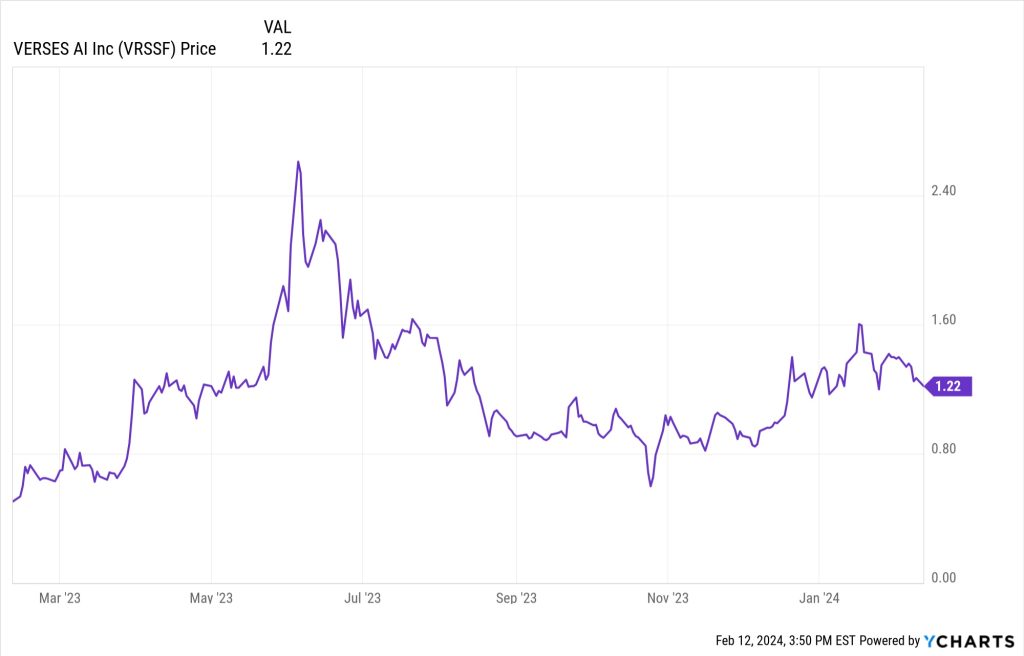
Vertiv (VRT) was probably one of the stocks teased by Ian King as his “liquid cooling” plays in ads in December, though he wasn’t specific enough to be sure. That’s a data center services company which does indeed provide cooling equipment (as well as services to help meet other data center needs, including power, racks, monitoring equipment, etc.), and it is both more of a “pure play” than the general HVAC companies (Carrier, etc.) and much more ambitiously valued since it started to get the “hot stock” treatment from its AI connection starting last summer.
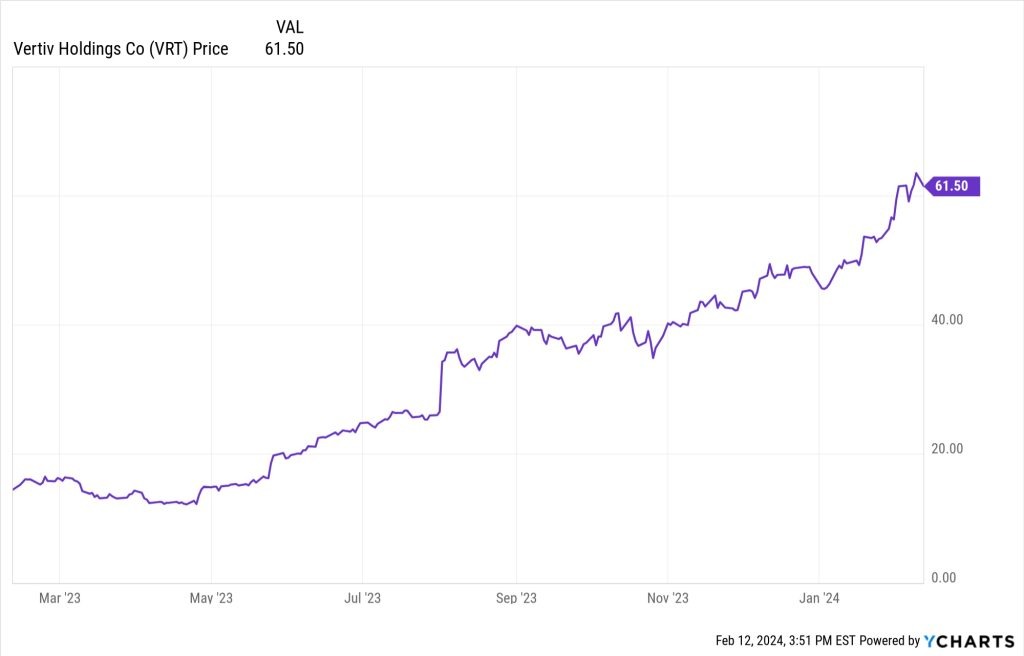
And that’s it for our A.I. alphabet over the past year… I guess we need to get some “Z” names teased by the newsletter brahmins so we can flesh out the last few slots and really get to an “A to Z” coverage, but that’s plenty to think about for now. Those are the 50+ stocks we’ve seen teased over the past year or so as artificial intelligence plays, or have covered in this space as we’ve reviewed picks by various newsletters — might you have others that you’ve seen folks recommend and which we should include on the next update to this list, or favorites you want to talk or ask about? Our happy little comment box below awaits your input… don’t worry, we don’t bite.
Disclosure: Of the companies mentioned above, I own shares of and/or call options on Alphabet, Amazon, NVIDIA, Shopify, Symbotic, UIPath, and Unity Software. I will not trade in any covered stock for at least three days after publication, per Stock Gumshoe’s trading rules.
Irregulars Quick Take
Paid members get a quick summary of the stocks teased and our thoughts here. Join as a Stock Gumshoe Irregular today (already a member? Log in)




